Egypt - 1985
Taking long service leave for the middle school term in 1985, I went on my first trip to Europe.
(A 13-week Melbourne - Bangkok - Hong Kong - Taipei - Japan - Trans Siberian Railway -
UK - Athens - Israel - Egypt - Western Europe - Singapore - Melbourne trip).
I flew to Cairo from Jerusalem in Israel.
A large statue of RamsesII at Memphis near Cairo.
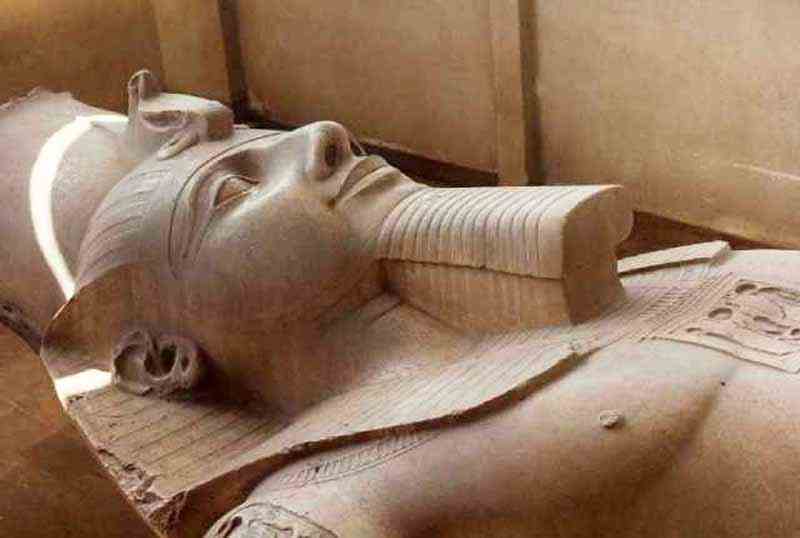
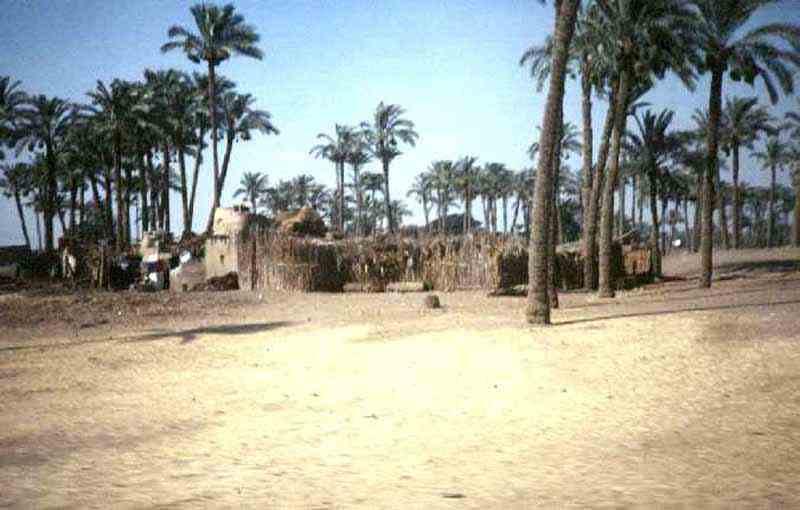
The stepped pyramid of Djoser at Saqqara was built about 2620 BC.
It was the earliest stone structure of its size in the world.
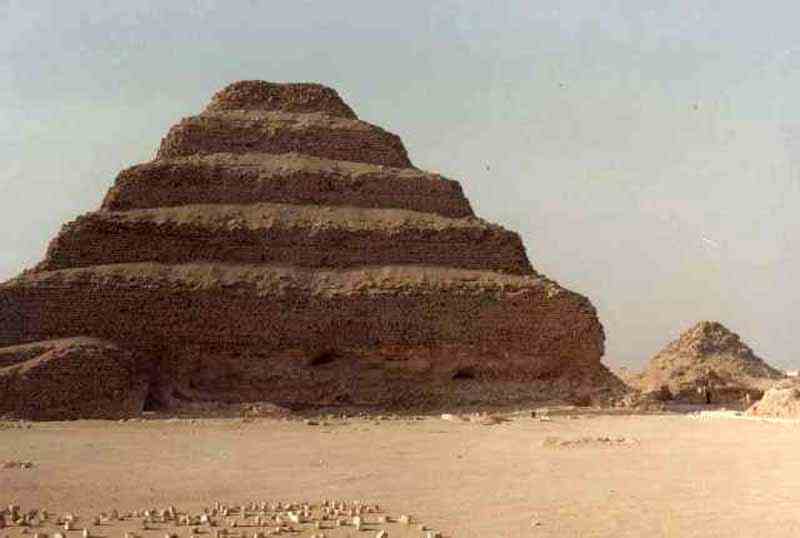
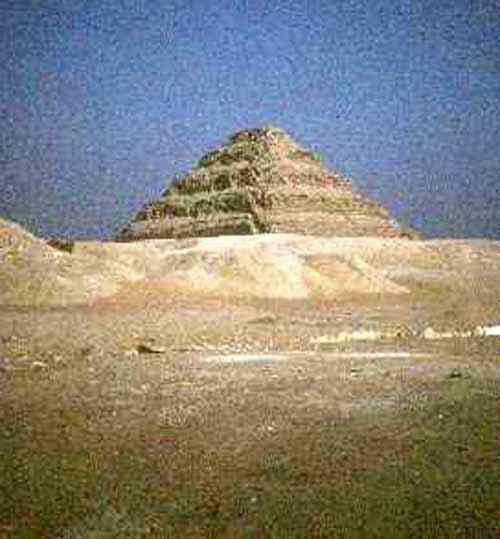
My first glimpse of the famous Giza pyramids.

A camel ride for the last 250 metres to the Giza pyramids.
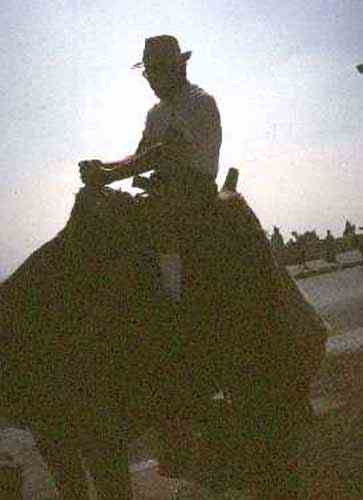
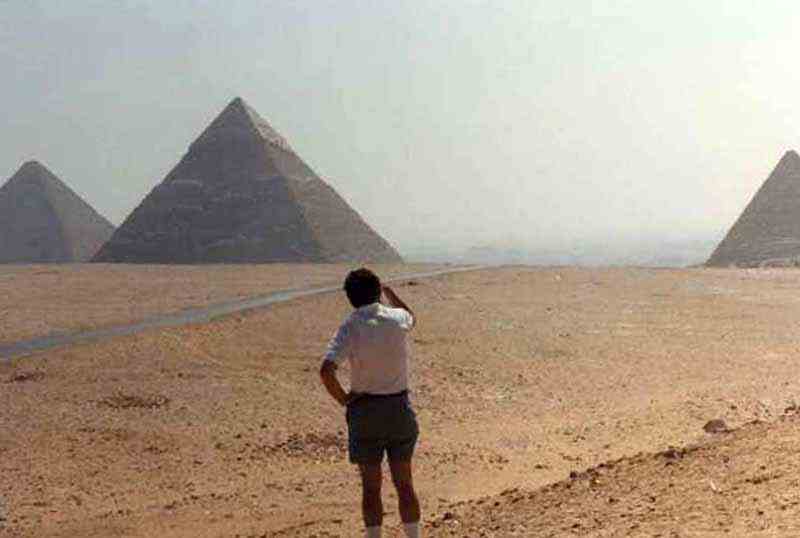
There are 9 pyramids on the Giza Plateau and they were built about 2600BC.
In case the king died early they were built in 3 stages - underground chamber, base and upper gallery.
They took 20 years to build.

Cheops (Khufu) is the largest pyramid.
It is perhaps the greatest single building ever erected by mankind.
Its 230m sides rise at an angle of 51.87degrees and are accurately oriented to the four cardinal points of the compass.
We were taken inside it to the burial chamber and tomb of Cheops.
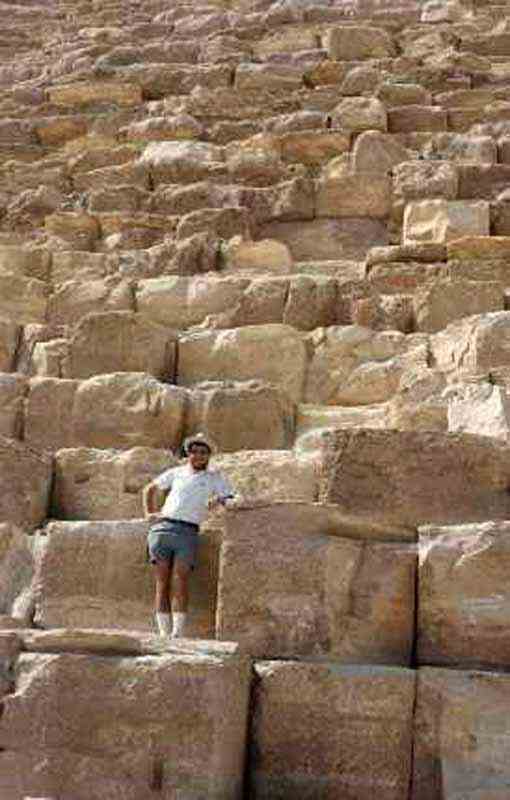
Chephren (Khafre). The middle pyramid on the Giza plateau.
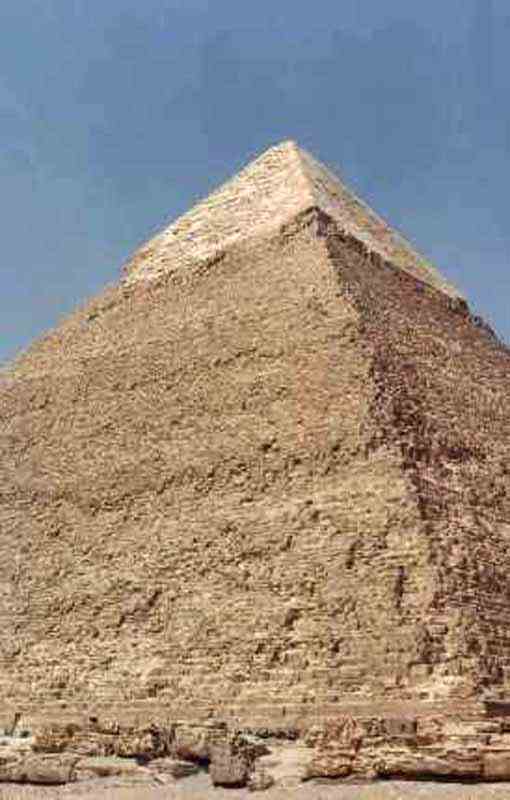
A view of Cairo from the pyramid of Cheops.

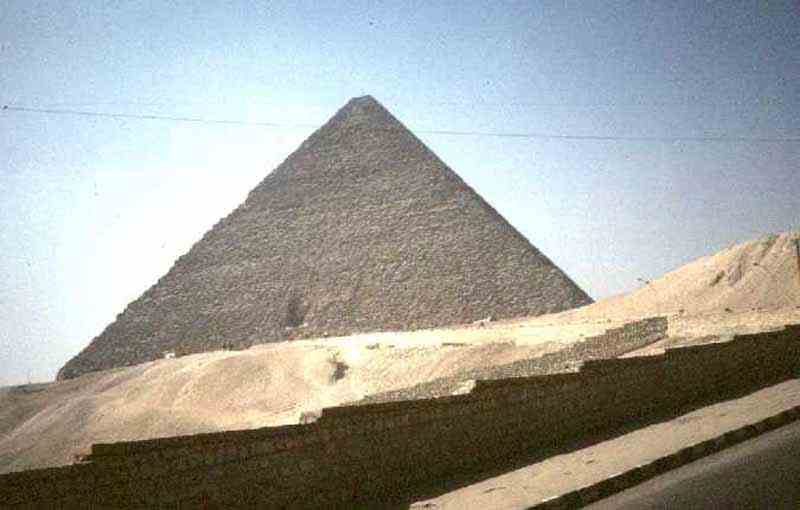

The most popular and current theory of the builder of the Sphinx holds that it was commissioned by the 4th Dynasty King, Chephren about 2500BC.
Chephren was one of the sons of Cheops who is recognized as the builder of the Great Pyramid. The Sphinx lines up with the Pyramid of Chephren.
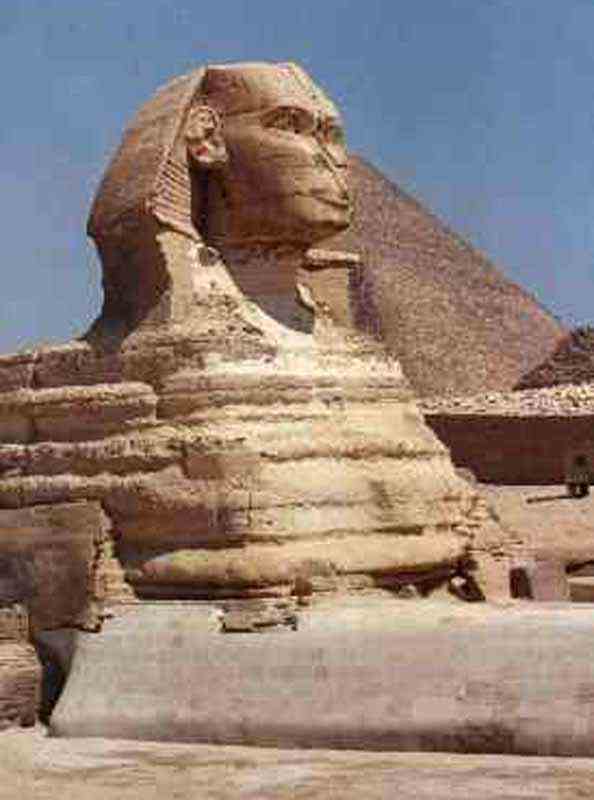
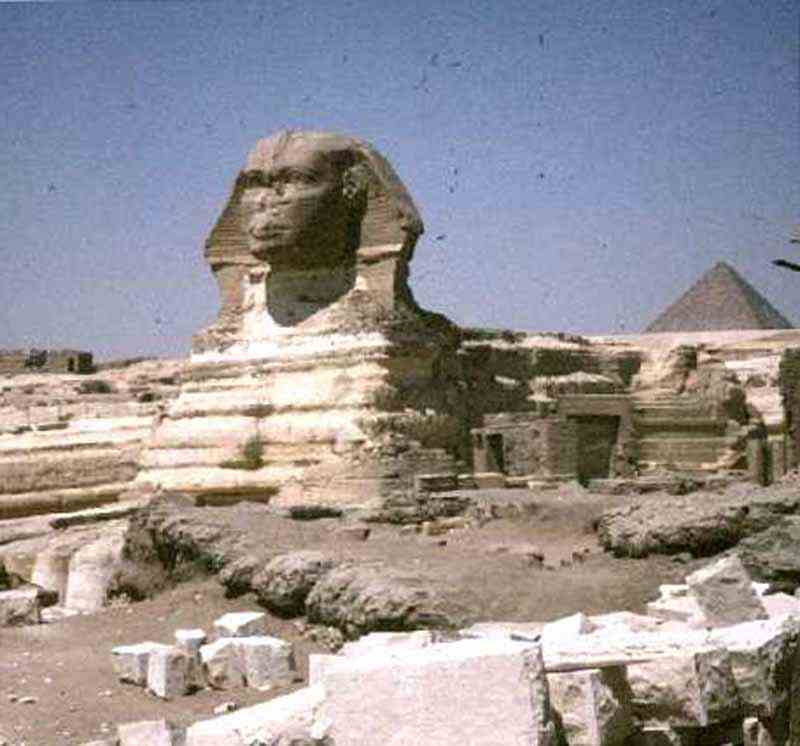
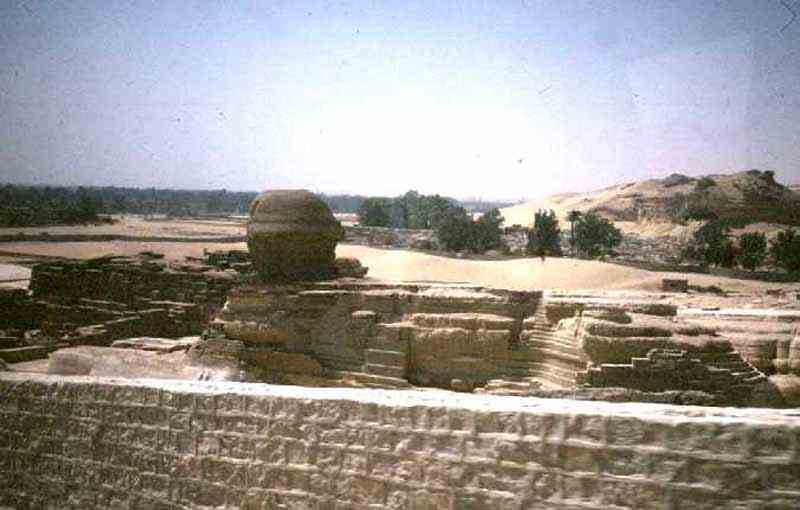
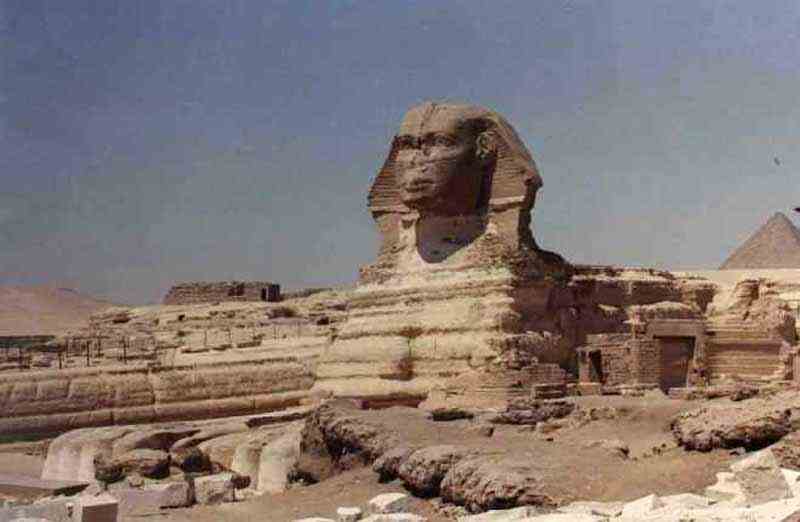
The Nile River in Cairo.
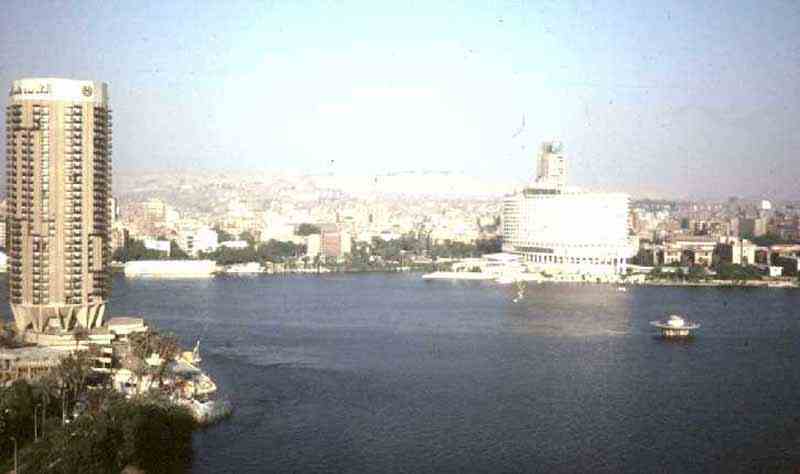
A demonstration of making papyrus.
The stem of the reed is peeled, cut into strips, hammered, squeezed, soaked for a week, woven and pressed for a week.
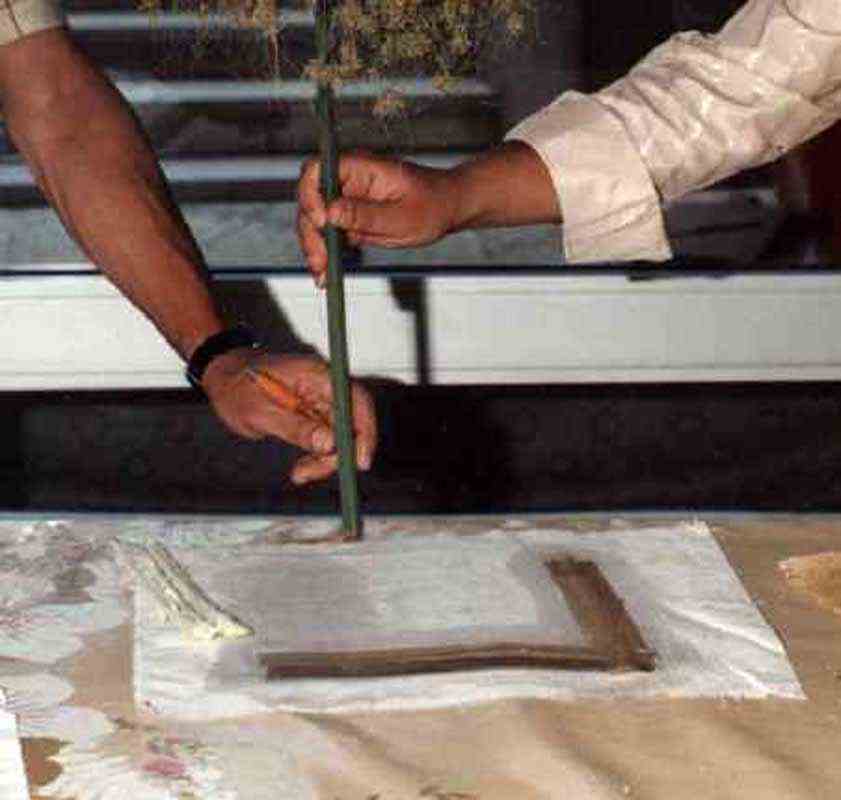
After a visit to the Citadel of Salah El Din where we toured the Mosque of Mohamed Ali,
and a great visit to the fantastic Cairo Museum we flew down to Aswan.
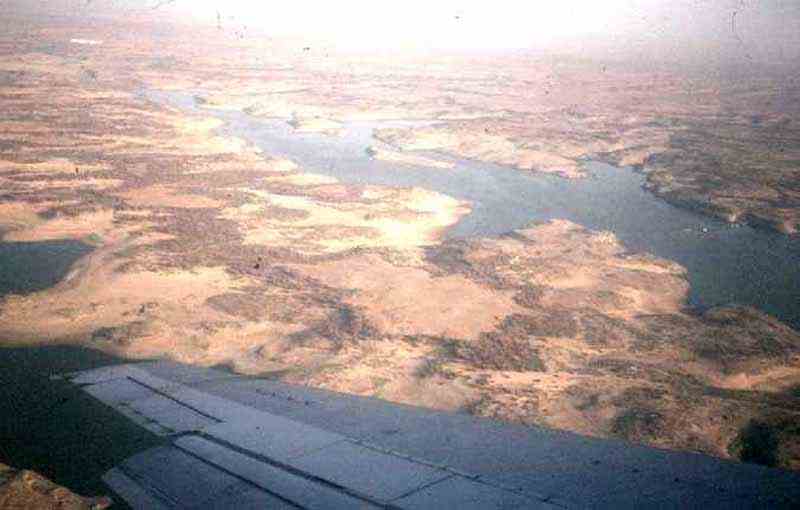
Aswan
The cruise boat, Anni, our accommodation for 4 nights and in which we cruised from Aswan to Luxor.

Aswan was a delightful spot. It is situated just below the First Cataract of the Nile
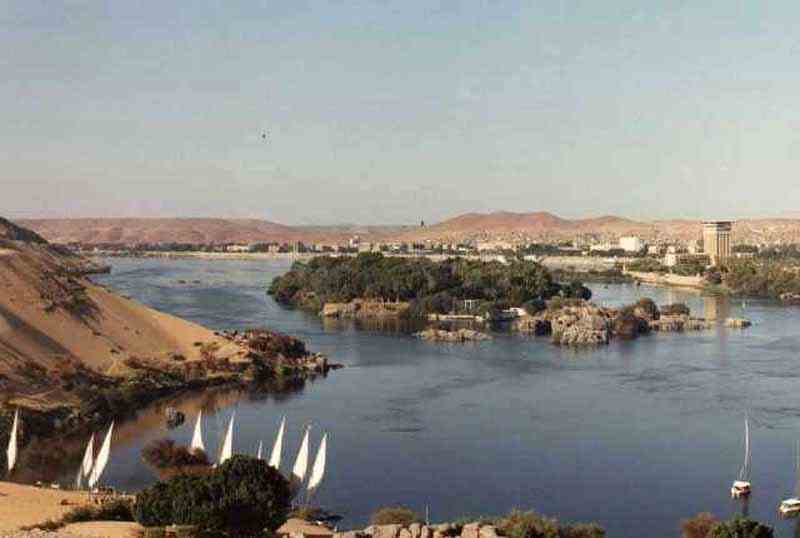
The First Cataract of the Nile.
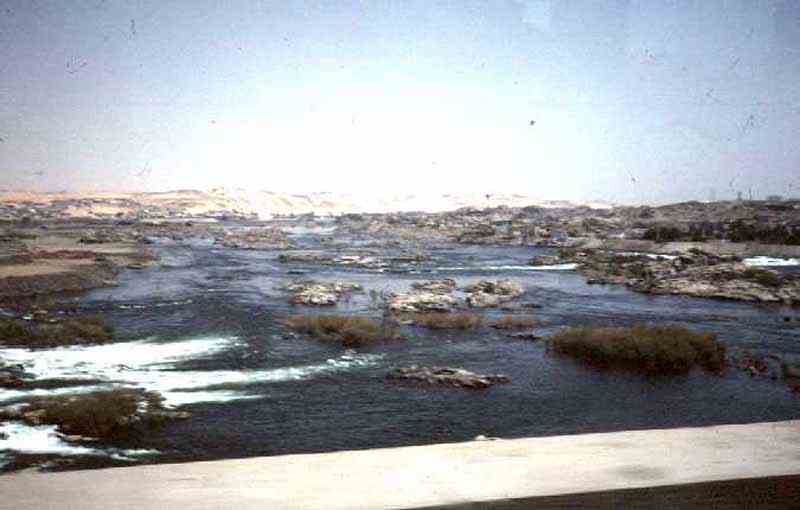
One of many feluccas on the Nile River at Aswan.
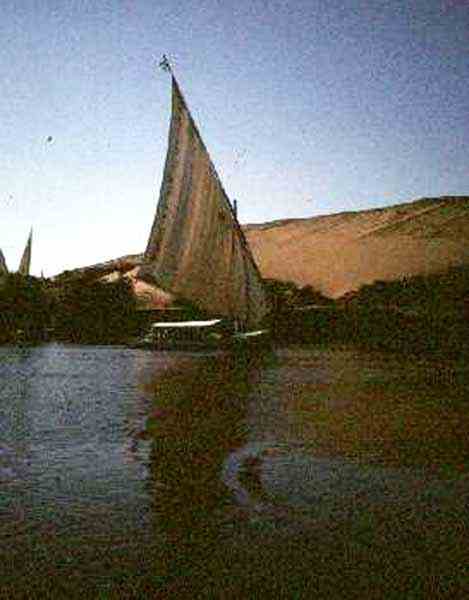
The Aga Khan mausoleum at Aswan.
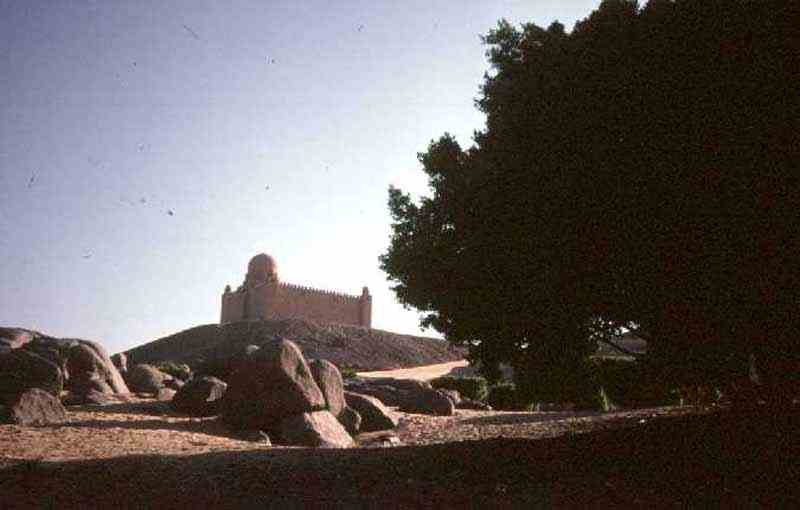
An Australian tourist standing on The Unfinished Obelisk in a granite quarry at Aswan.
The workers discovered a flaw in the stone and abandoned it.
This obelisk would have been the biggest in Egypt had it been finished; 45m high and nearly 5 metres thick.
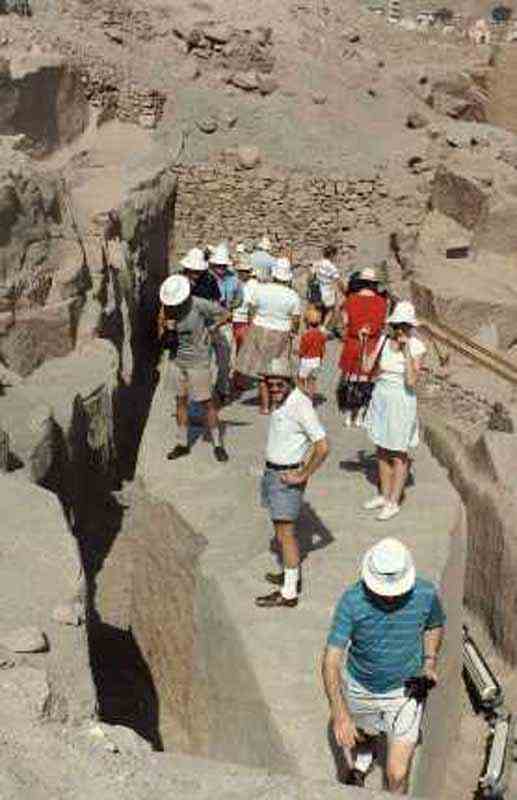
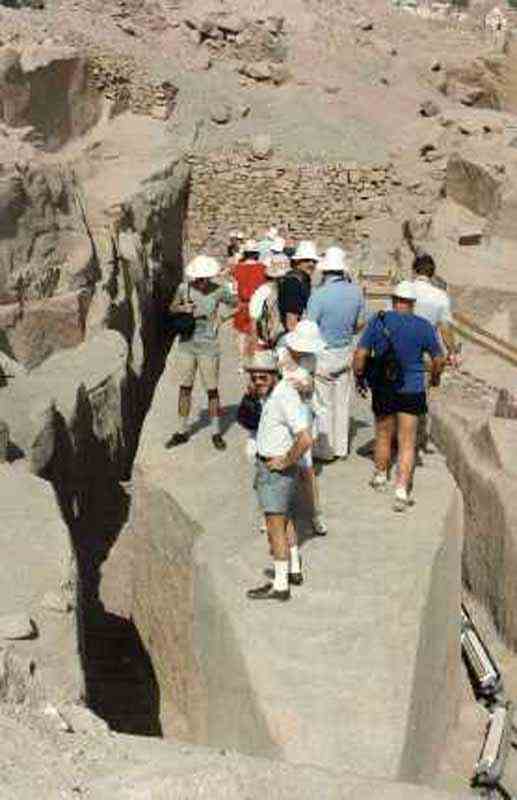
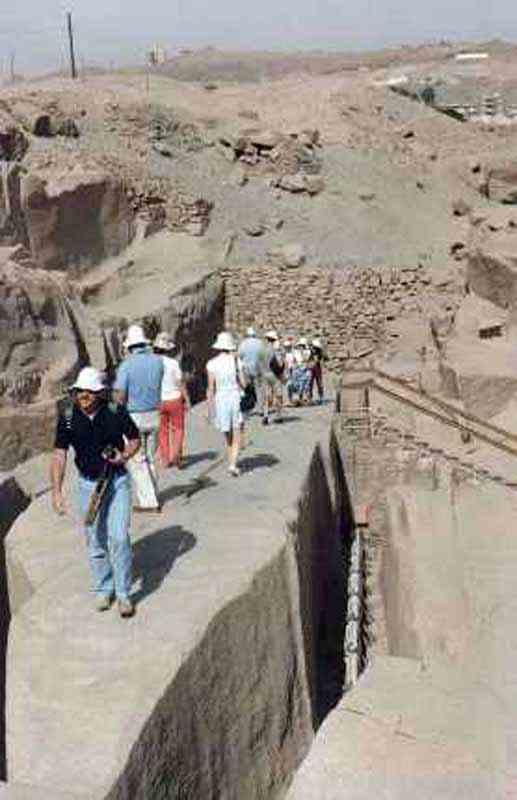
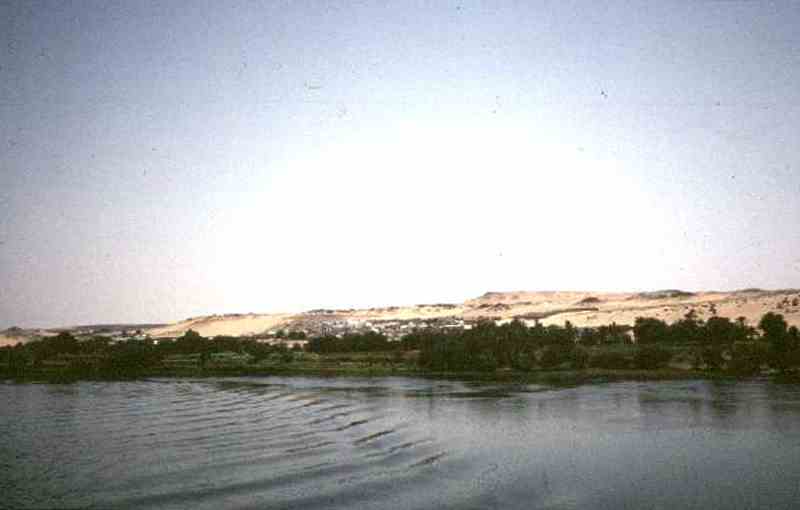
On top of The Aswan High Dam.
As well as controlling flooding of the Nile River water is used for irrigation and the production of hydro electricity.
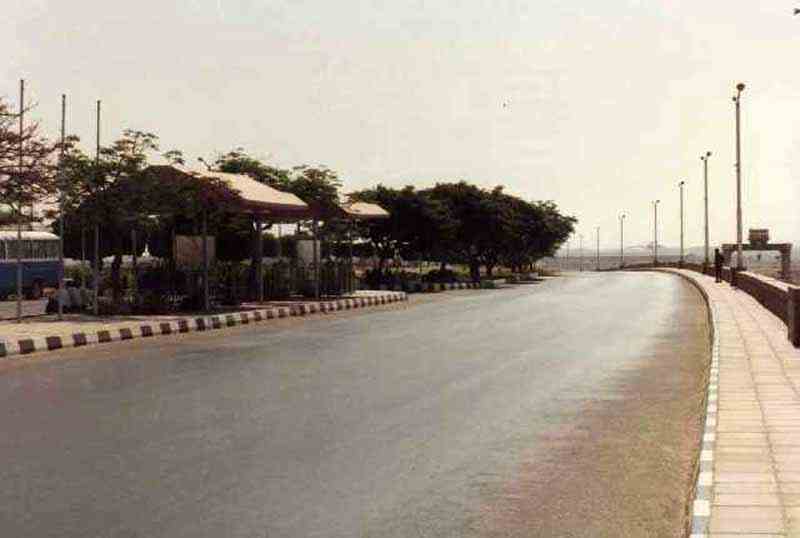
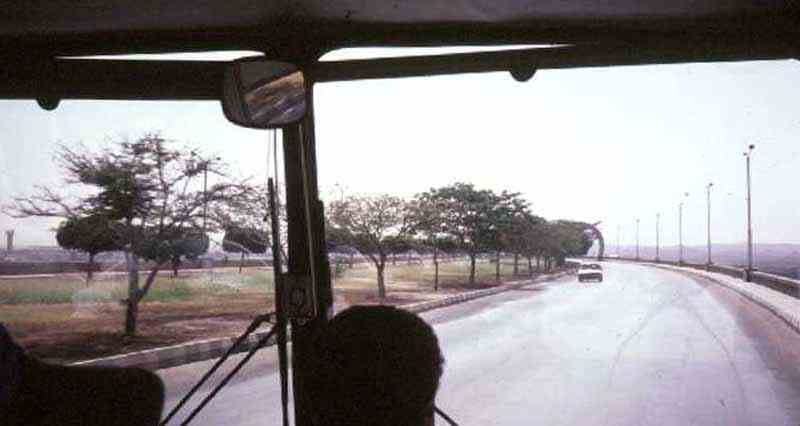
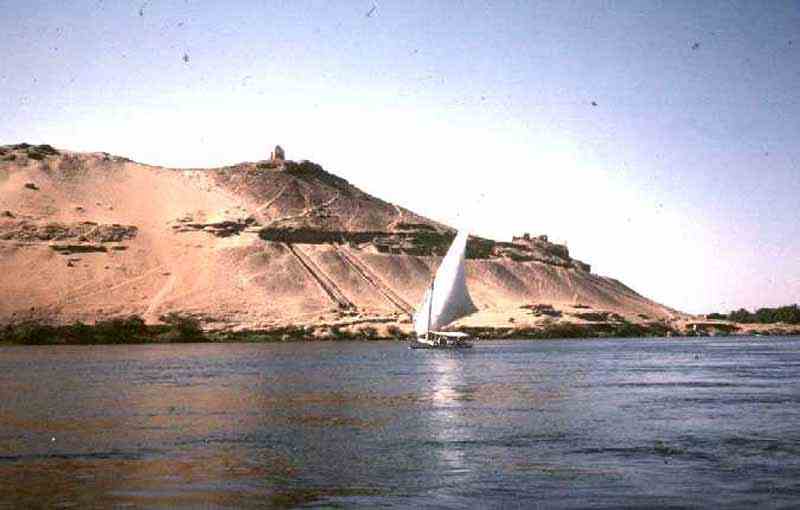
The Temple of Isis on the island of Philae at Aswan.
Before its gradual submergence in the reservoir created by the old Aswan Dam in 1902 and 1907,
the alluvium-covered granite rock of Philae, had always been above the highest Nile floodings.
Accordingly, it attracted many ancient temple and shrine builders.
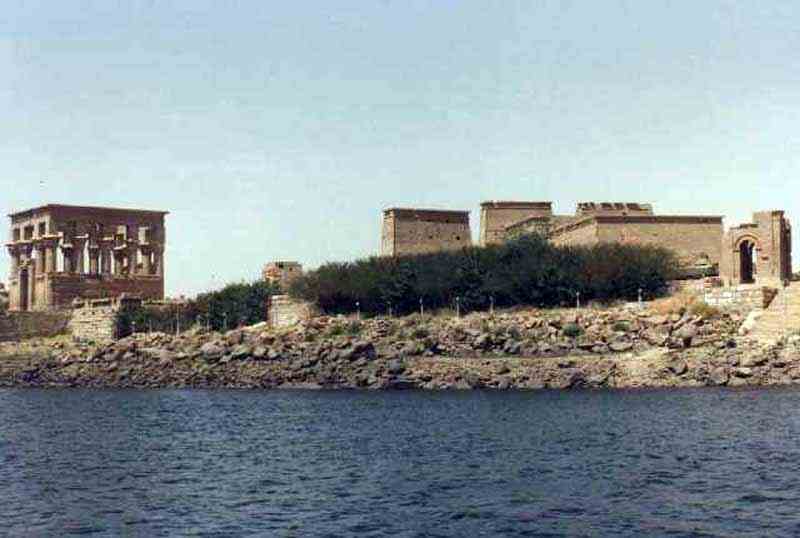
From early Egyptian times the island was sacred to the goddess Isis. The earliest structures known date from 689BC.
The present colonnade was built about 360BC.
The complex of structures of the Temple of Isis was completed by Ptolemy II and III from 285BC to 221BC.
Its decorations, dating from the period of the later Ptolemies and the Roman emperors
Augustus and Tiberius (27 BC to AD 37), were, however, never completed.
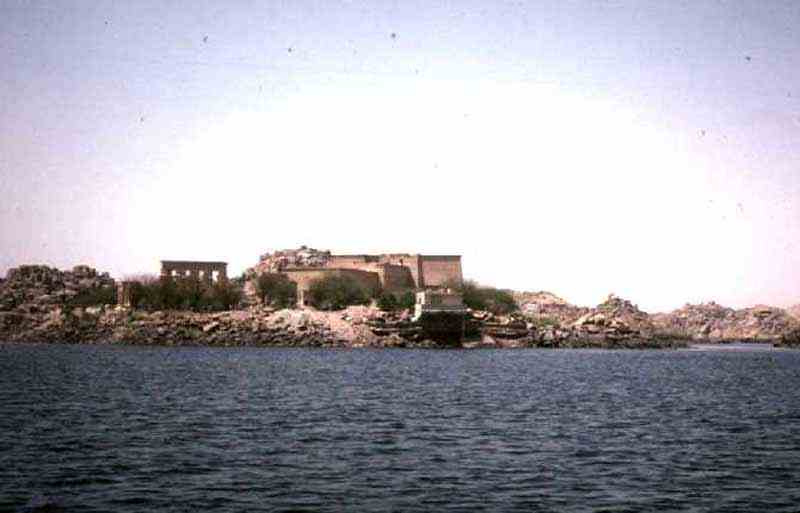
All these structures were thoroughly explored and reinforced (1895-96) before being partially flooded behind the old Aswan Dam.
In 1907 a careful inspection revealed that salts were damaging paints on the decorations.
When the temples re emerged after 1970 with the completion of the High Dam upstream,
it was found that considerable damage had been done to the shrines.
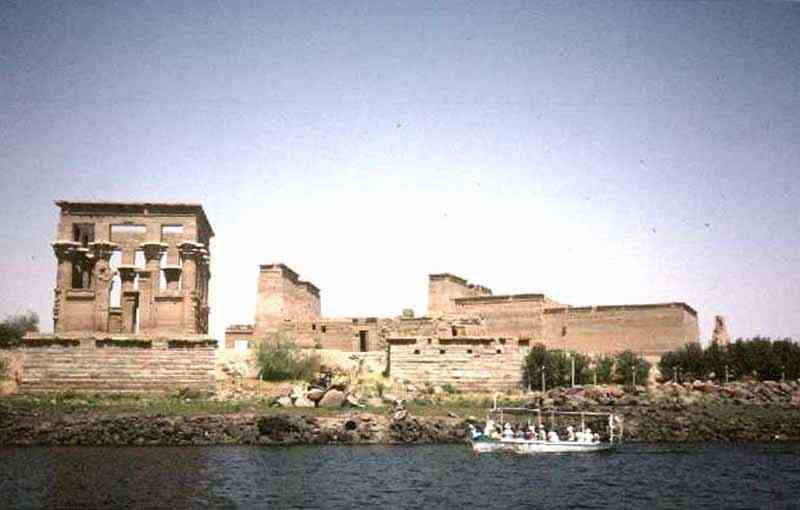
A decision was therefore made to remove them to higher ground on the nearby island of Agilkia.
Agilkia Island was leveled to resemble the original Philae, and the temples were rebuilt in 1980,
returning them to some measure of their original beauty.
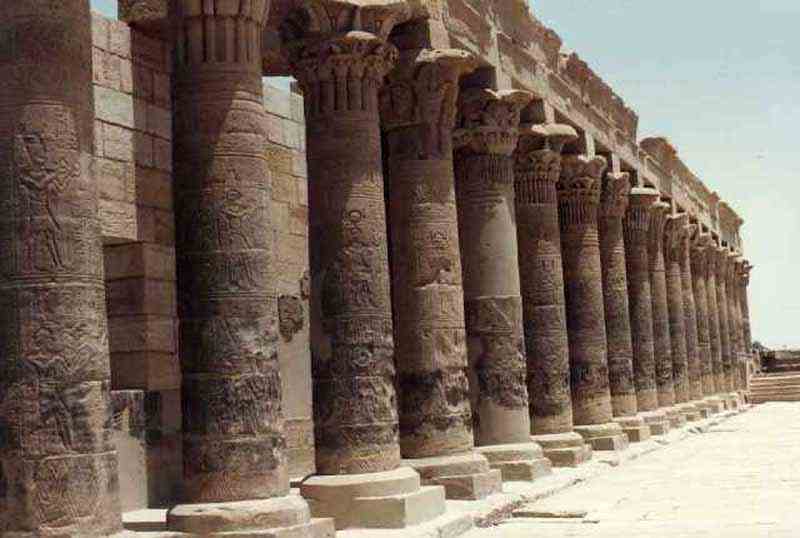
The Roman emperor Hadrian (reigned AD 117-138) added this kiosk.
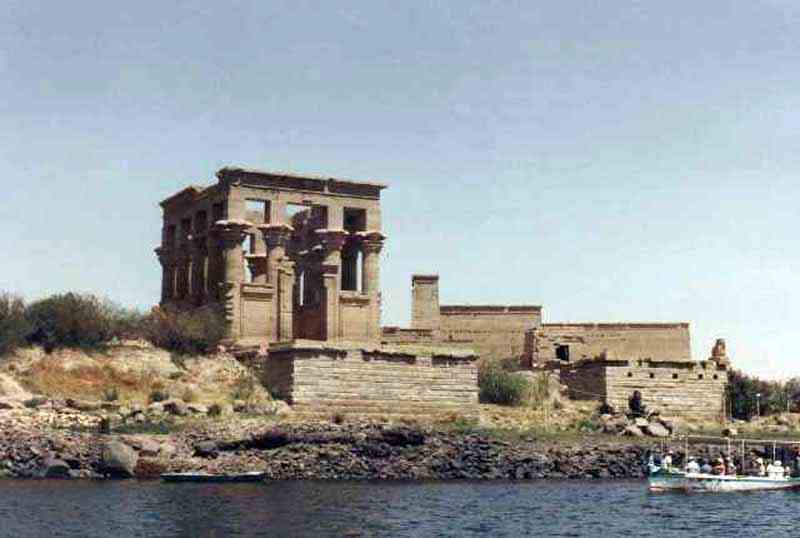
The Temple of Isis continued to flourish during Roman times and was not closed until the reign of Justinian I (AD 527-565).
Late in Justinian's reign the temple was converted into a church.
Many of the faces of the reliefs were defaced by the Coptics Christians who saw these reliefs as examples of a Pagan religion.
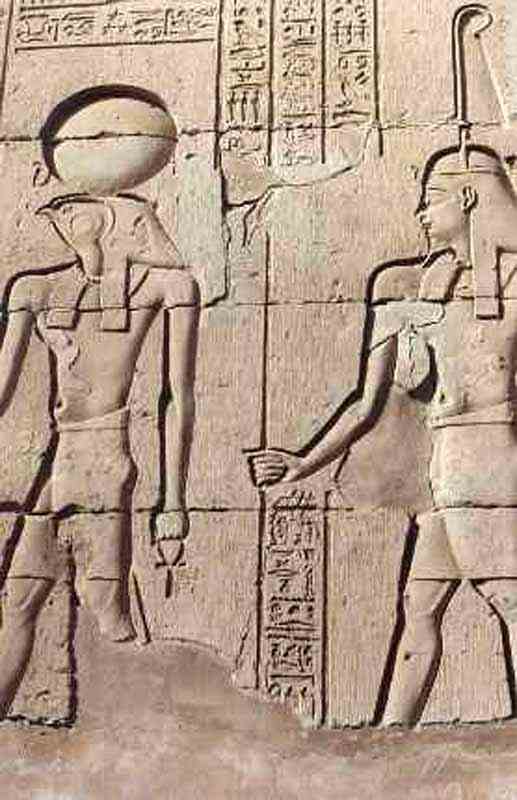
A pylon of the Temple of Philae.
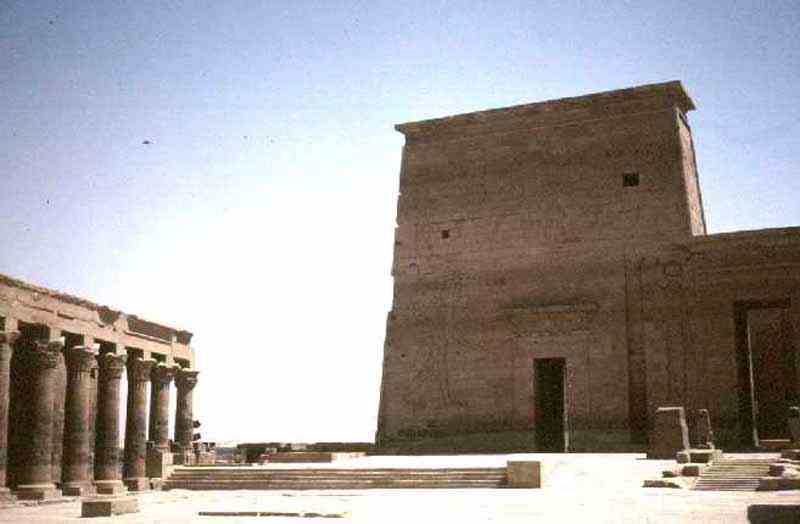
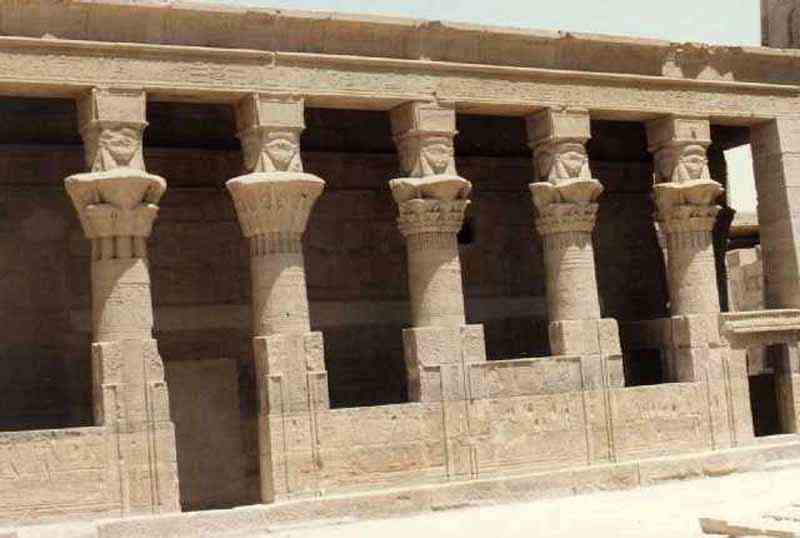
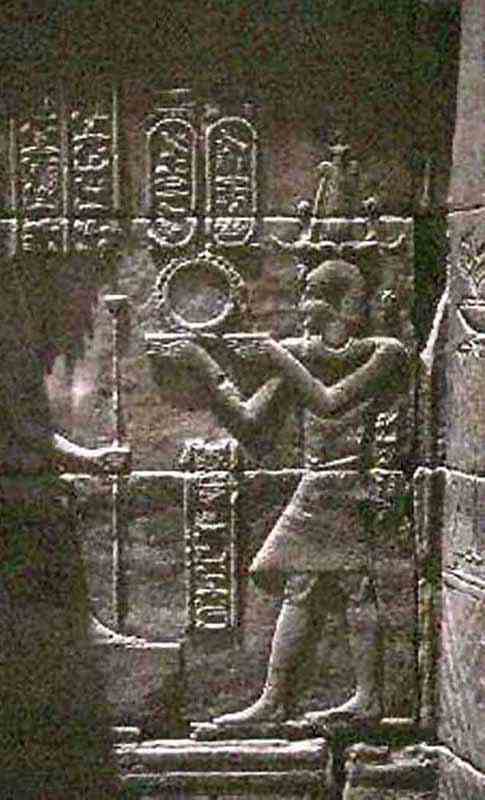

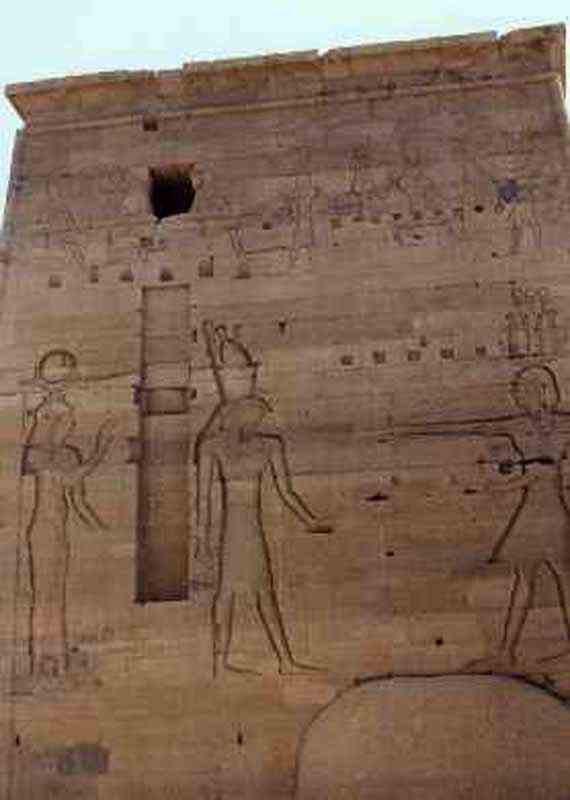
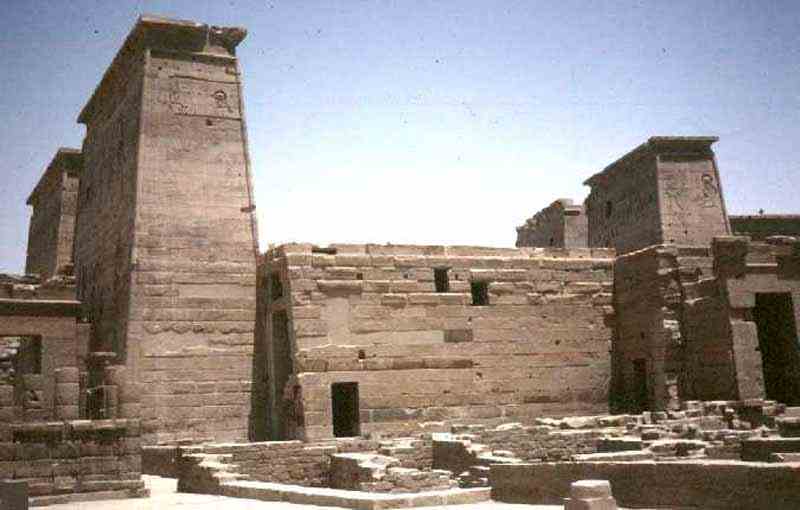
Kom Ombo
We cruised down the Nile River from Aswan to Kom Ombo on our boat, Annie.
Part of the temple which stands on a promontory at a bend in the Nile river at the village of Kom Ombo about 50 km north of Aswan.

The temple was built from 237 to 87 BC. It features an inner sanctuary made of solid granite.
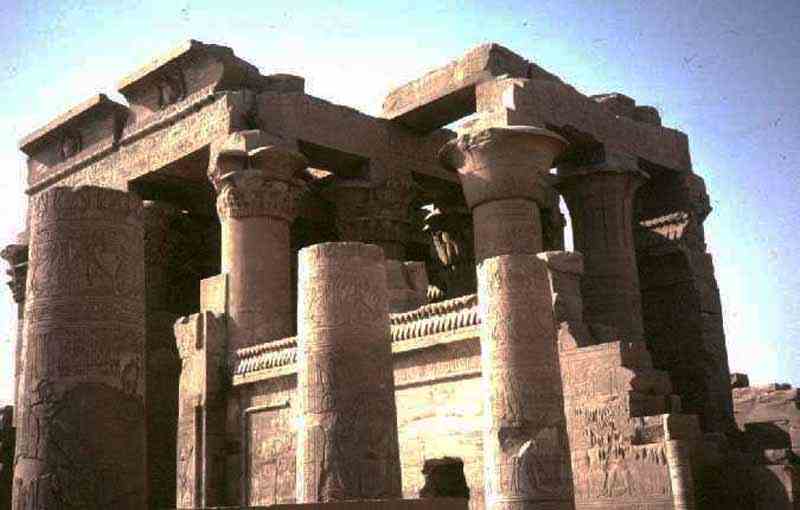
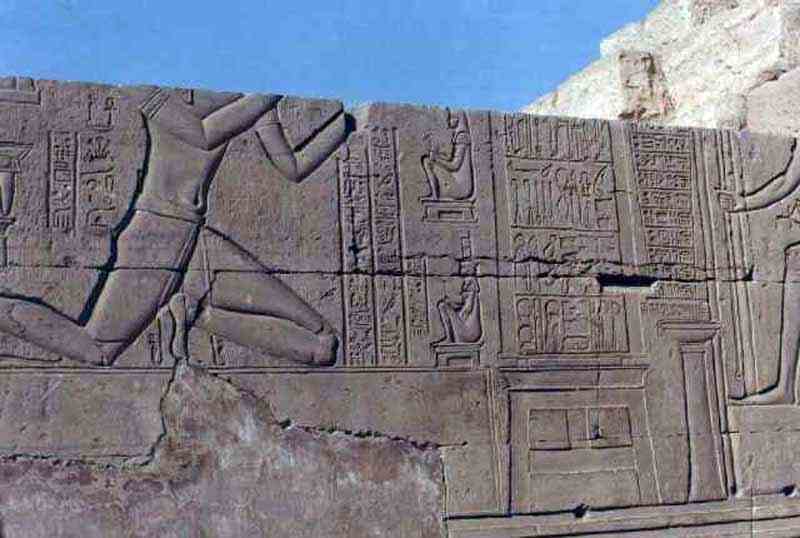
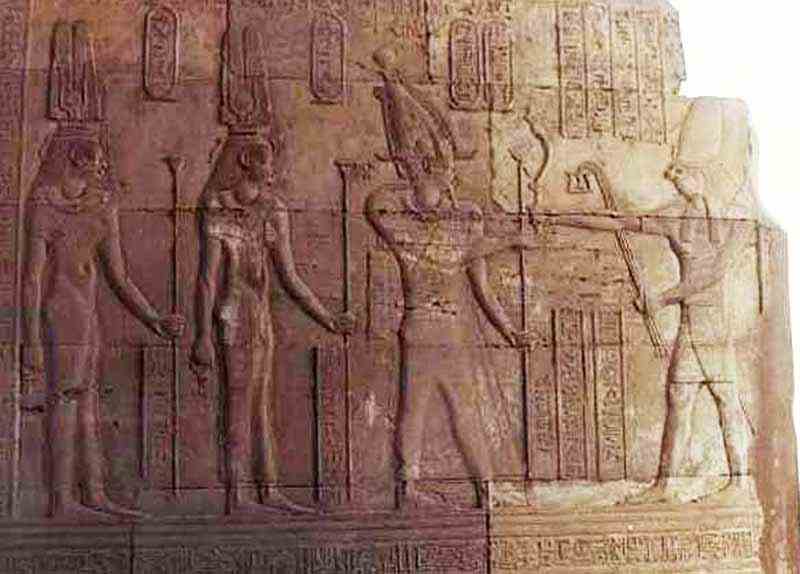
Kom Ombo means hill of sand.
It is the dual temple of Sorbek and Haroeris (the local crocodile god and the falcon-headed sky god)
and is the only temple dedicated to 2 gods.
Decorations on the ceiling of the temple at Kom Ombo.

All Egyptian figures have their pose with the left leg (heart side) closest to the viewer.
The temple was discovered in 1893 by a French expedition covered by this hill of sand and it took 23 years to remove the sand.
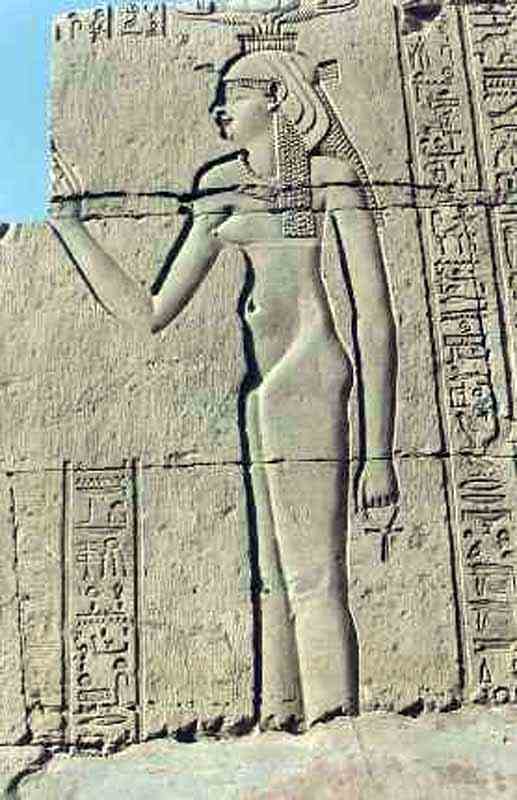
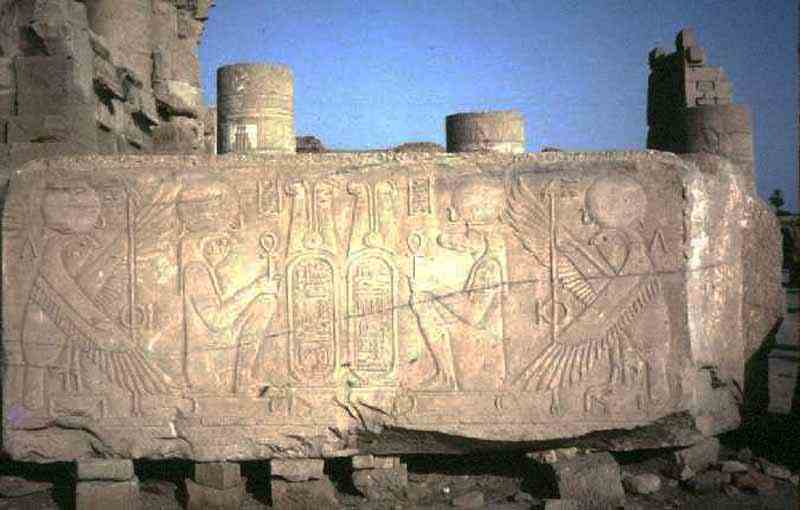
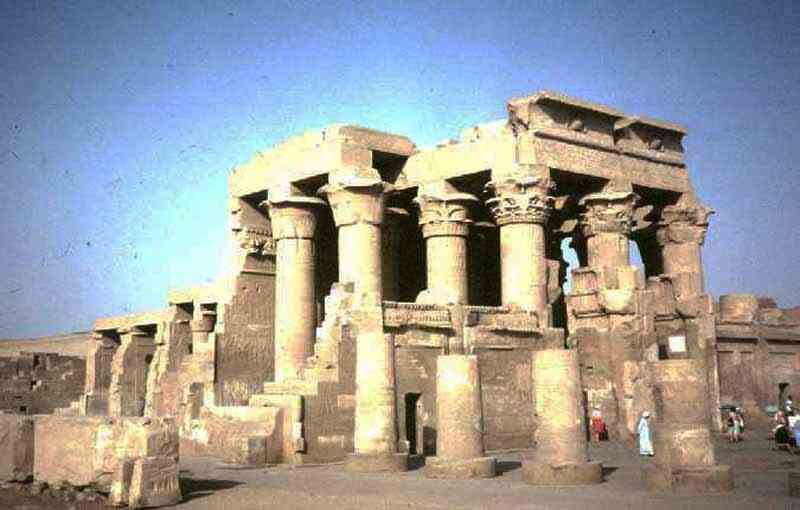
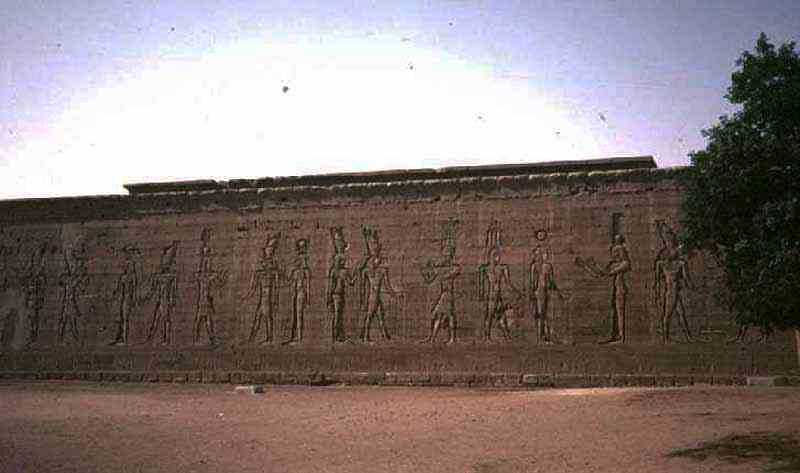
The stone blocks were held together with wooden wedges which have long since rotted away.
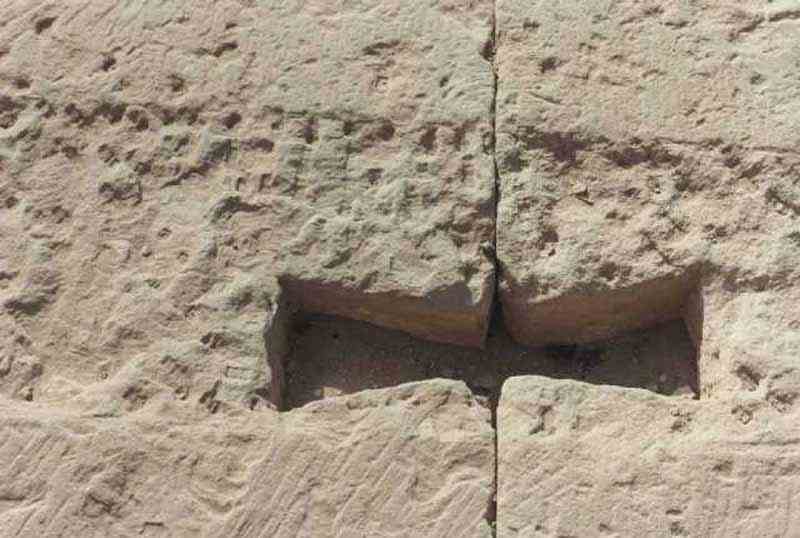
Our cruise boat, Annie, at Kom Ombo.
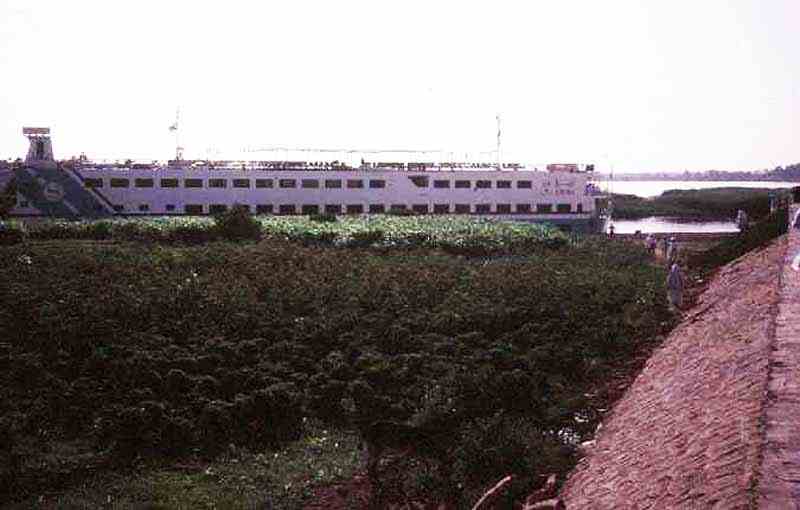
Edfu
One of the statues of Horus, the falcon-headed god at the Temple of Horus at Edfu.
Horus was the son of Osiris and Isis.
This temple which was covered by houses was discovered by the French in 1860. It took 40 years to uncover it.
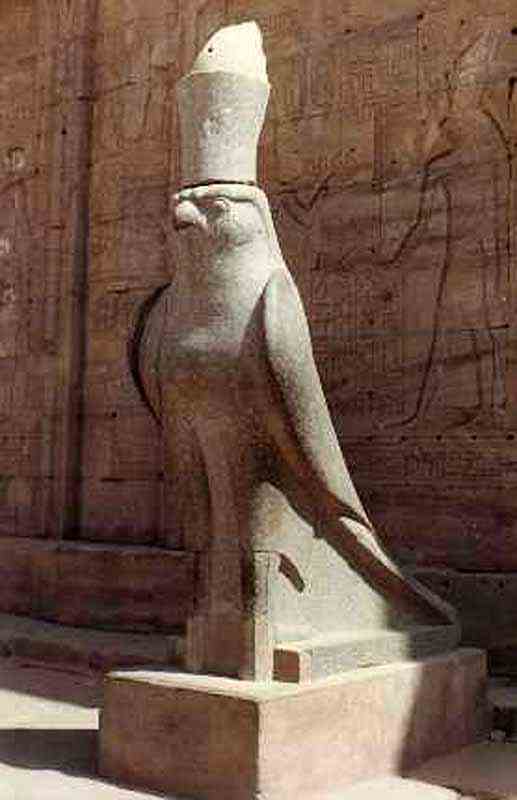
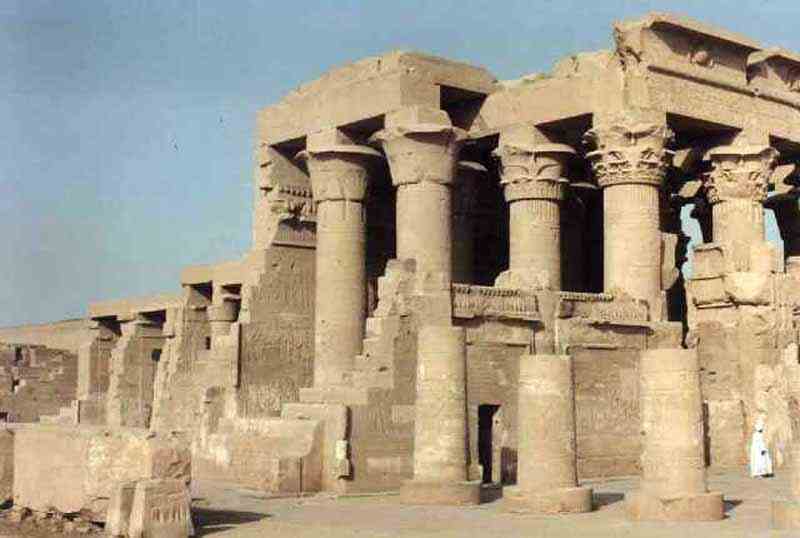
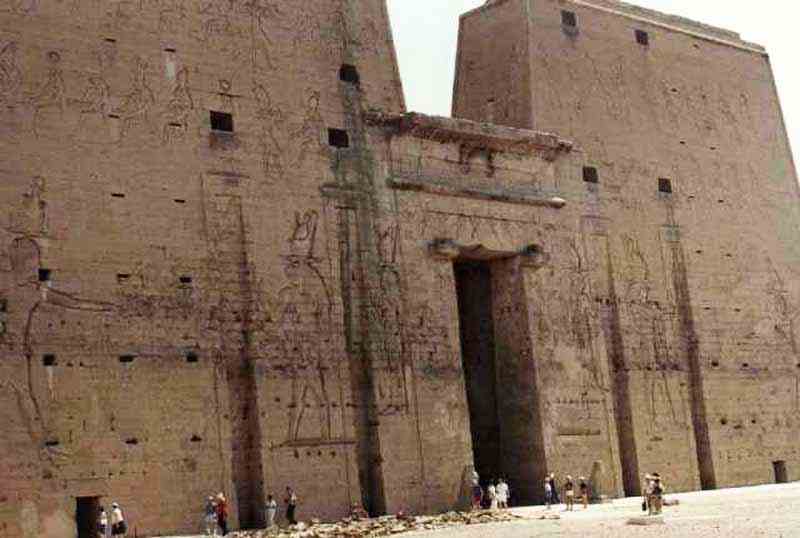
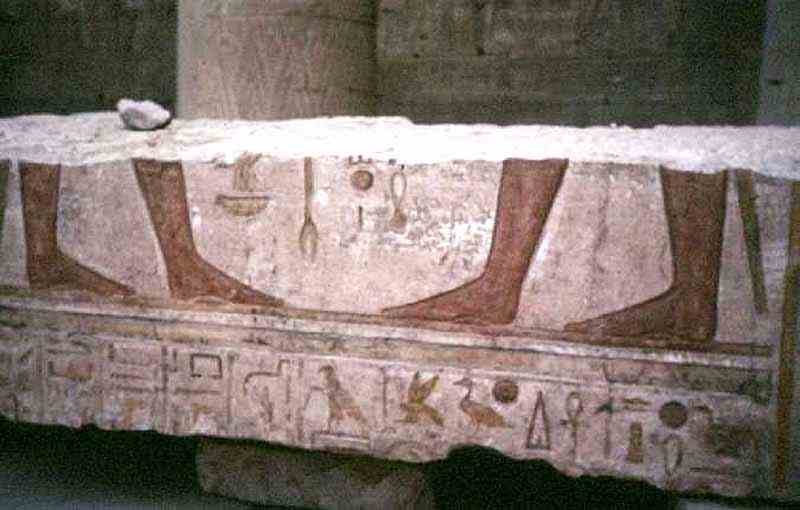
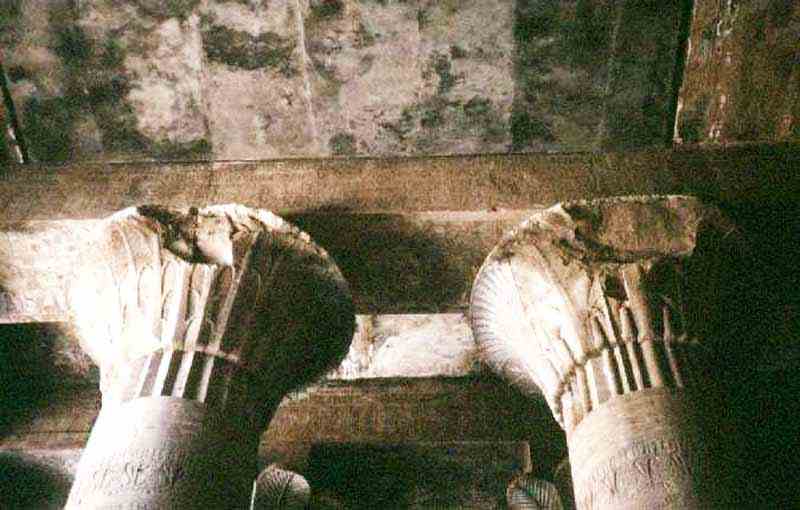
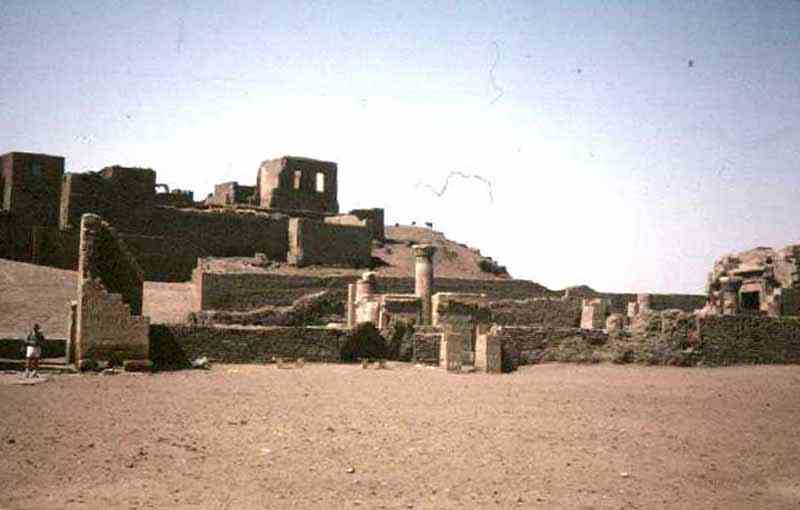
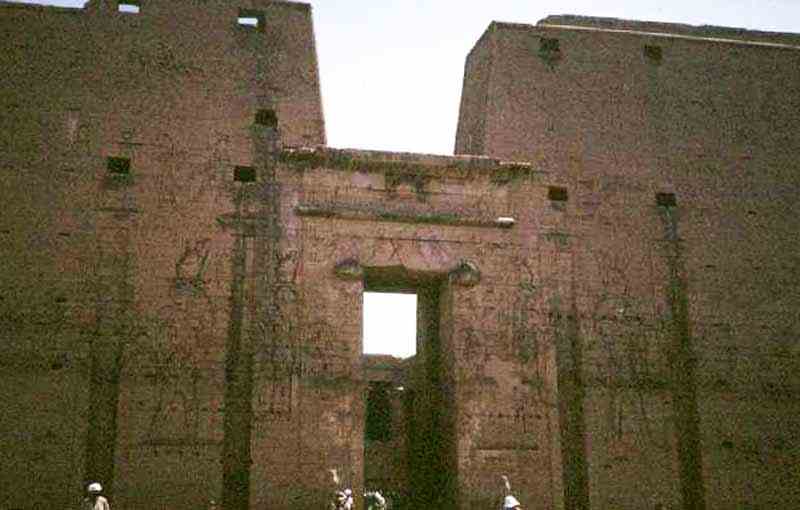
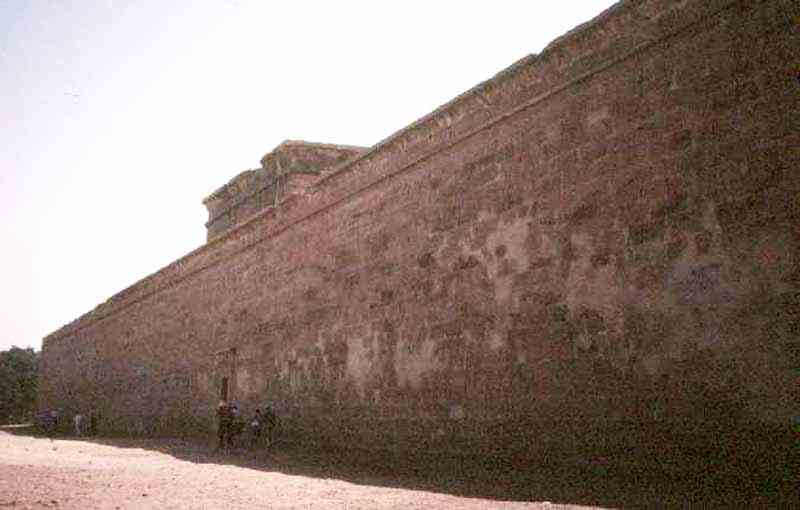
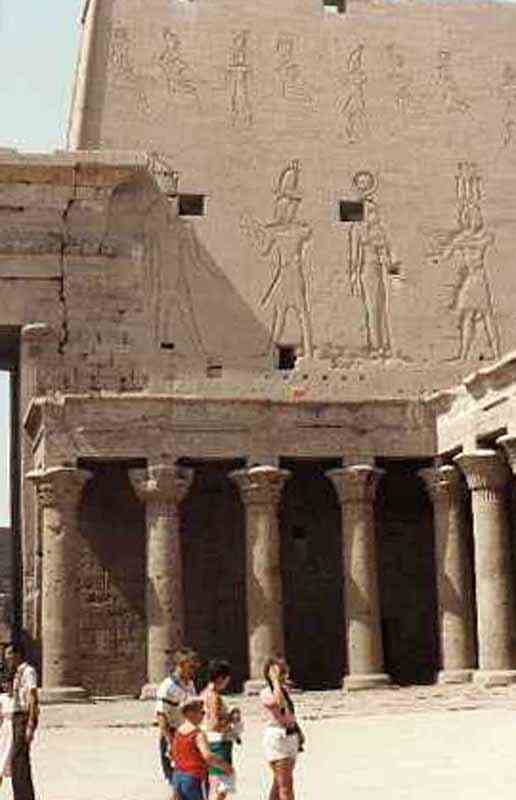
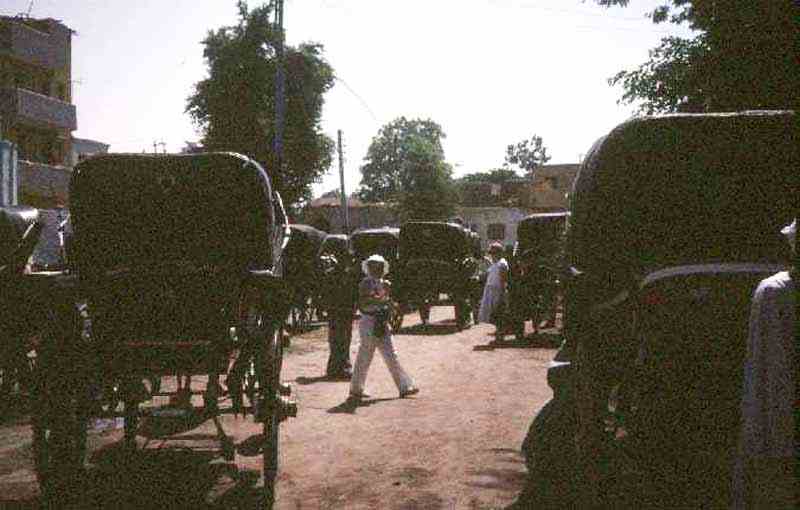
Esna
The Temple of Khnum, the ram-headed creator god, at Esna.
The ancient Egyptians believed that Khnum moulded man on a potter's wheel.
It was uncovered in 1832 and is only partly complete - the rest may be underneath nearby houses.
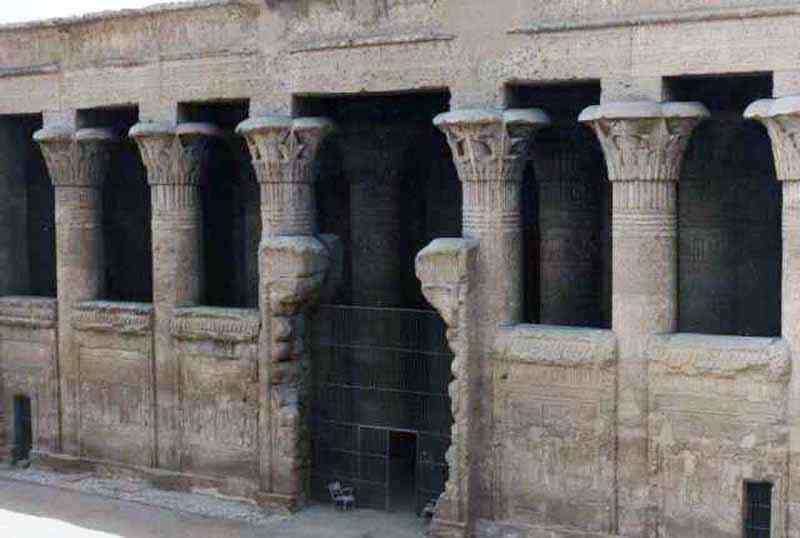
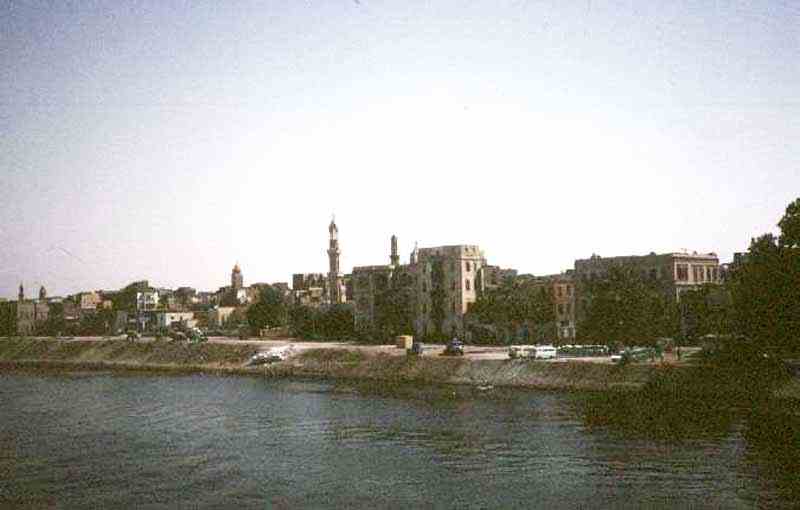
A barrage and loch on the Nile River at Esna.
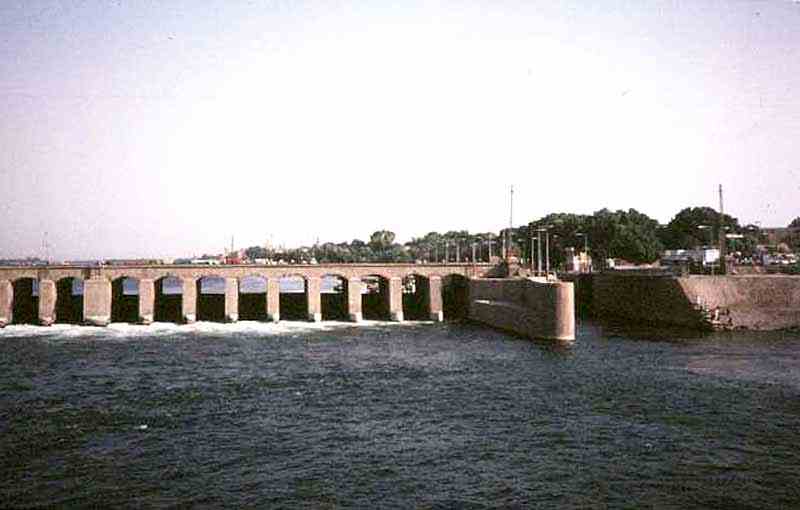
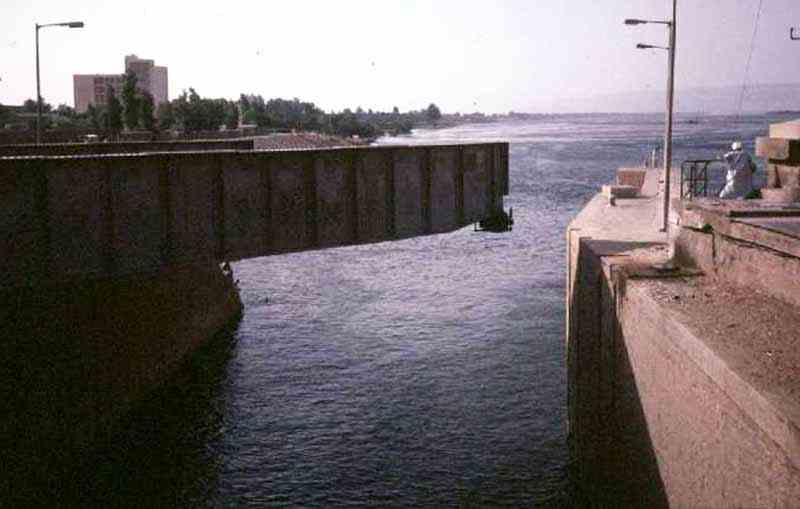
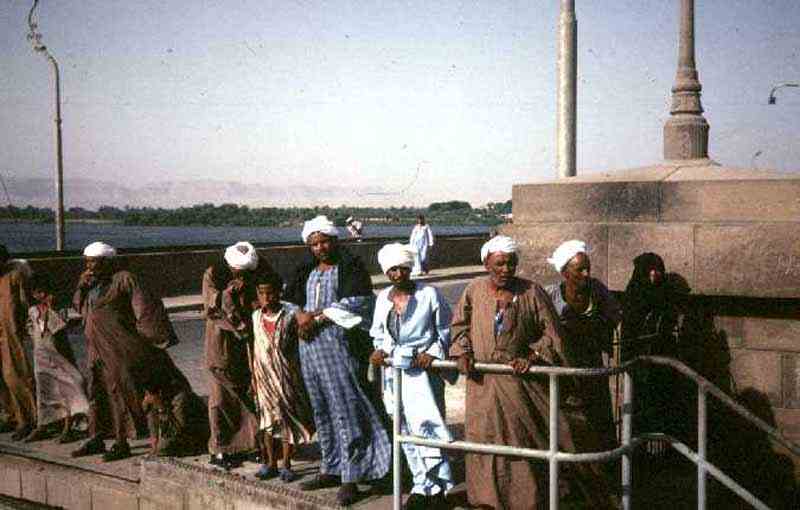
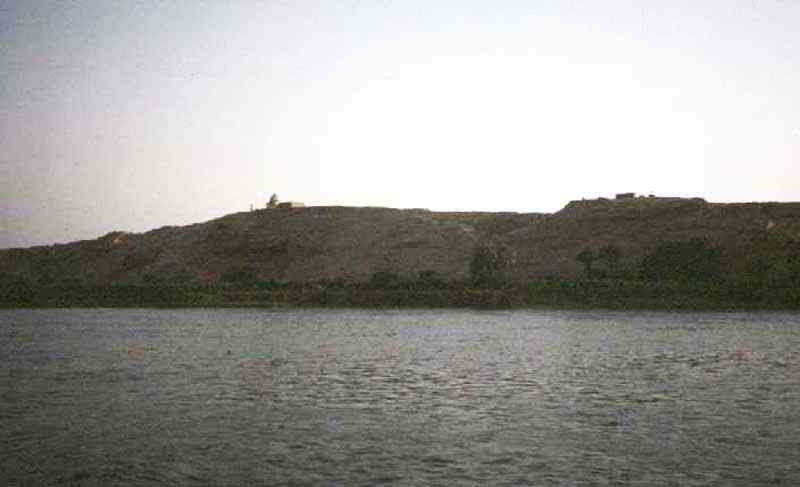
Luxor - Valley of the Kings
The entrance to Tutankhamun's tomb.
This tomb was covered with rubble from the building of other tombs and hence was not robbed like the others.
It was discovered by Carter in 1922. It contains the coffin that still contains the mummy
of the young king who died when he was 16 years, 4 months.
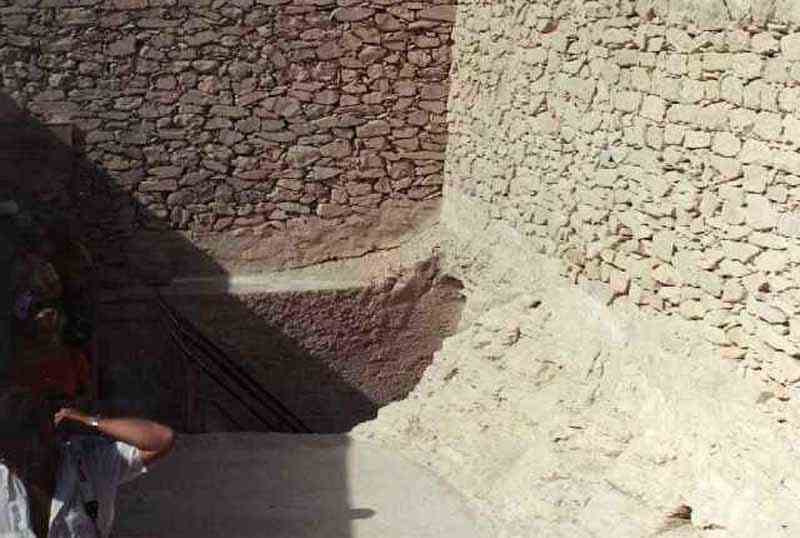
We also saw the tombs of Rameses VI, Rameses IX and Rameses III as well as the tomb of General Horennheb -
this was the tomb they were building for Tutankhamun but it was not ready when he died young.
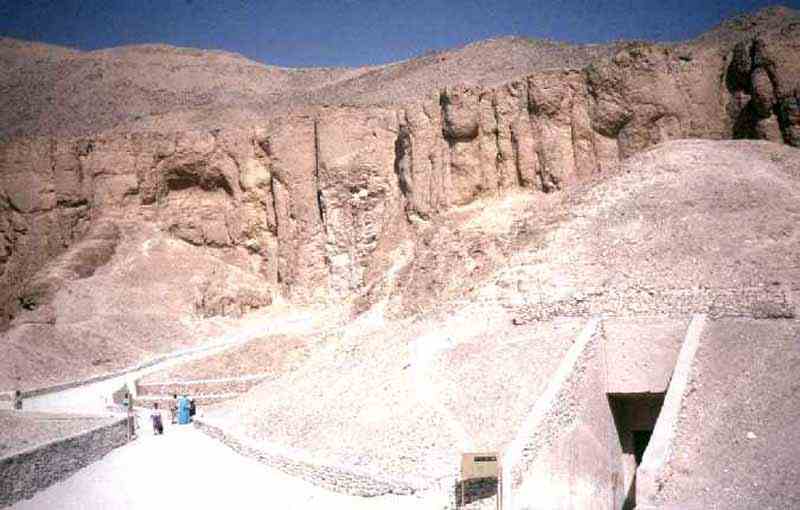
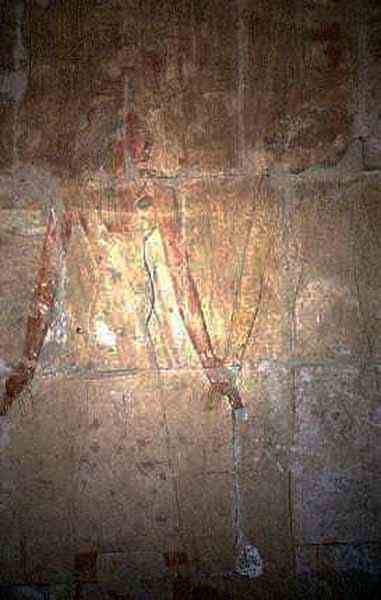
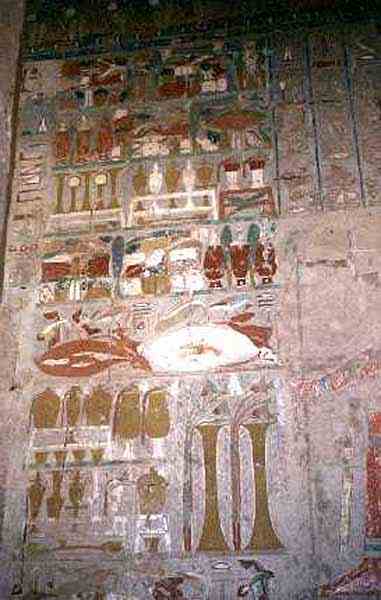
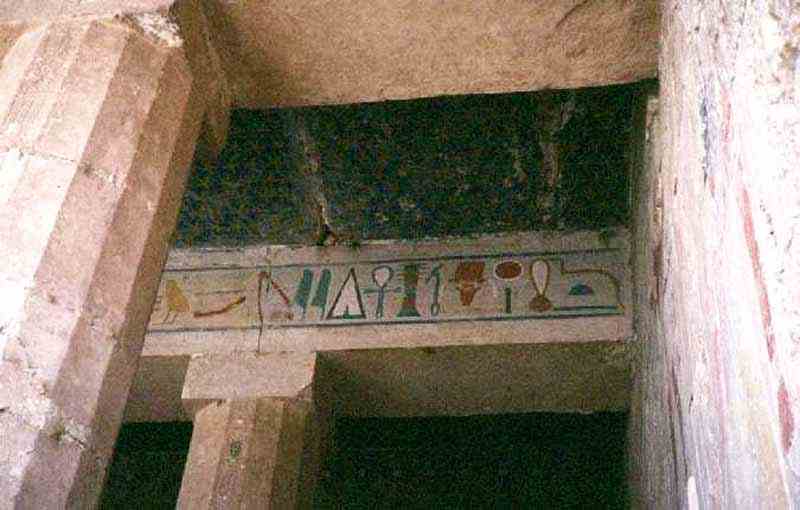
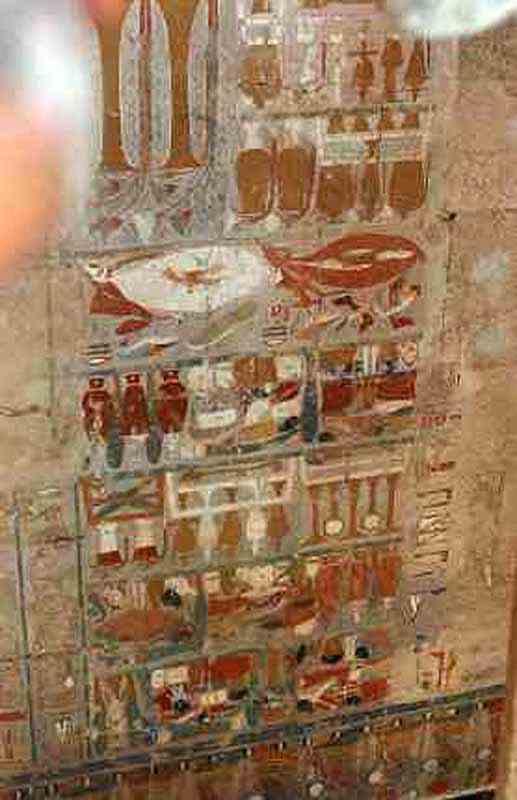
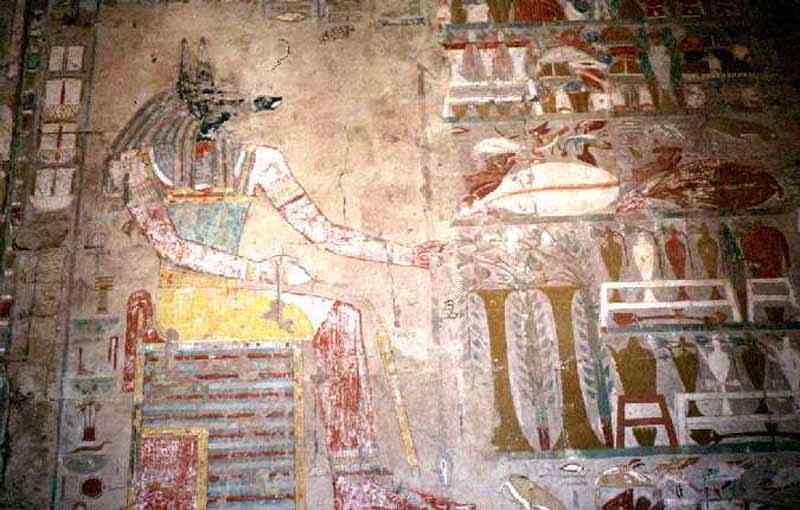
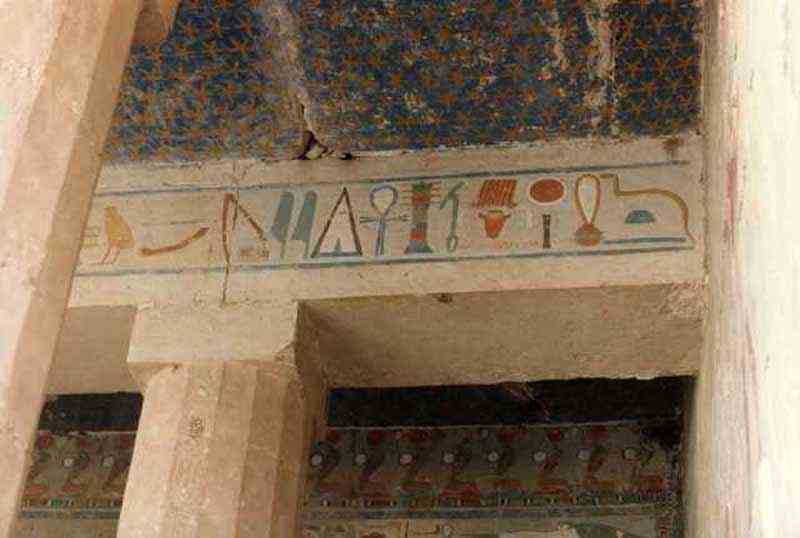
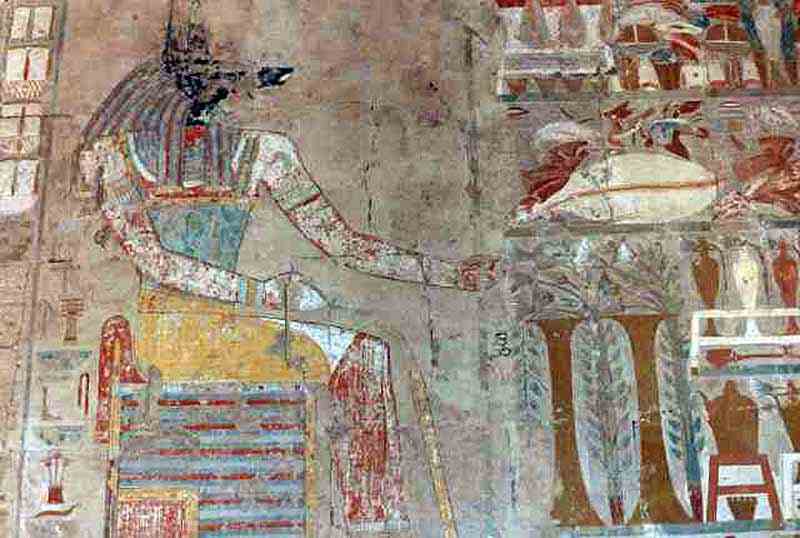
The Valley of the Queens
The Temple of Queen Hatchepsut, the only ancient Egyptian building of 3 stories.
At the Temple of Queen Hatshepsut. The Queen is not buried here, as she considered herself a ruler and wore a false beard.
She is believed to be buried in the Valley of the Kings.

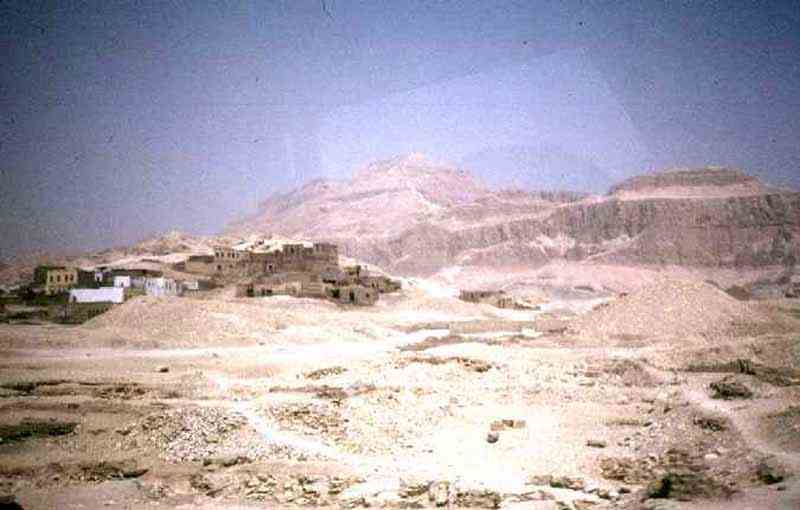
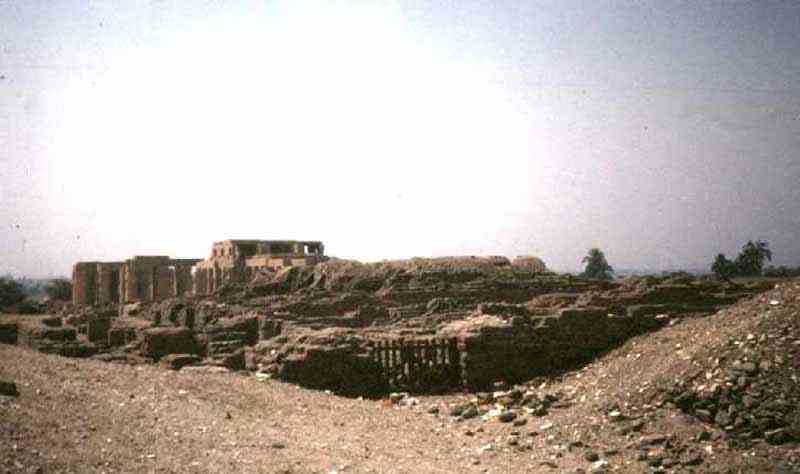
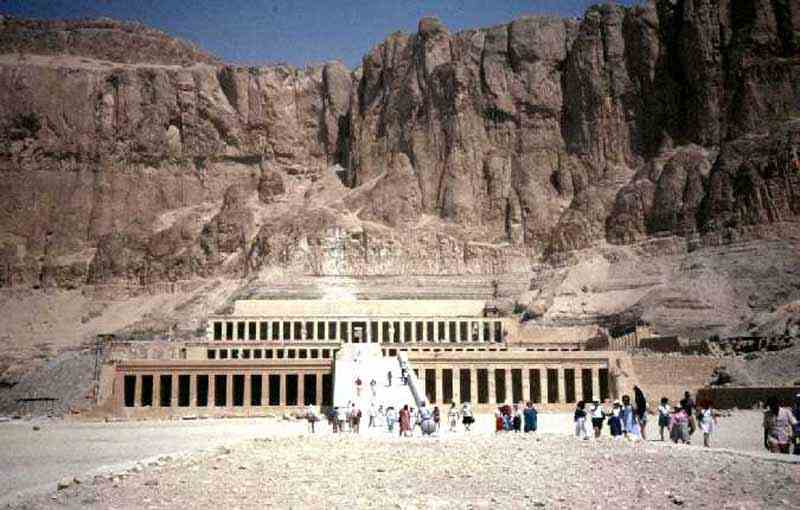
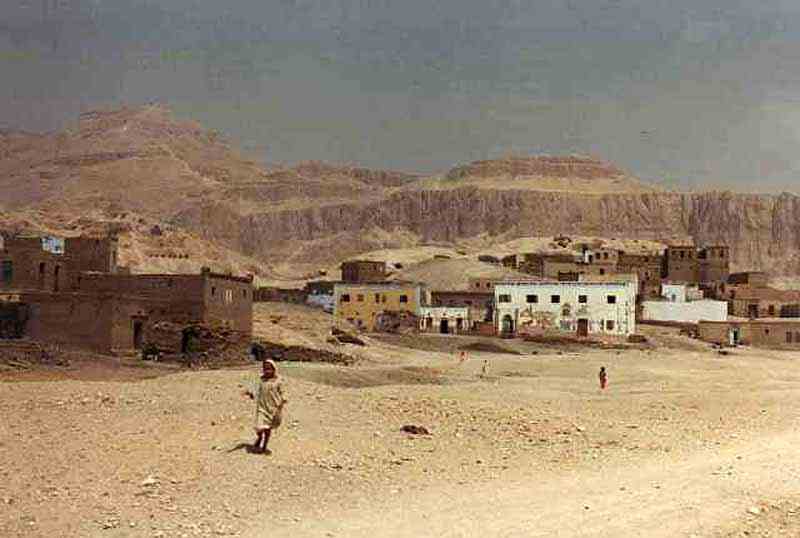
The Colossi of Memnon near Luxor. These 18m high statues are all that remain of a temple that was once on this site.
One of these statues was once damaged by a flood and a hole formed which whistled in the wind.
The locals thought it was the statue talking. The hole was later repaired.
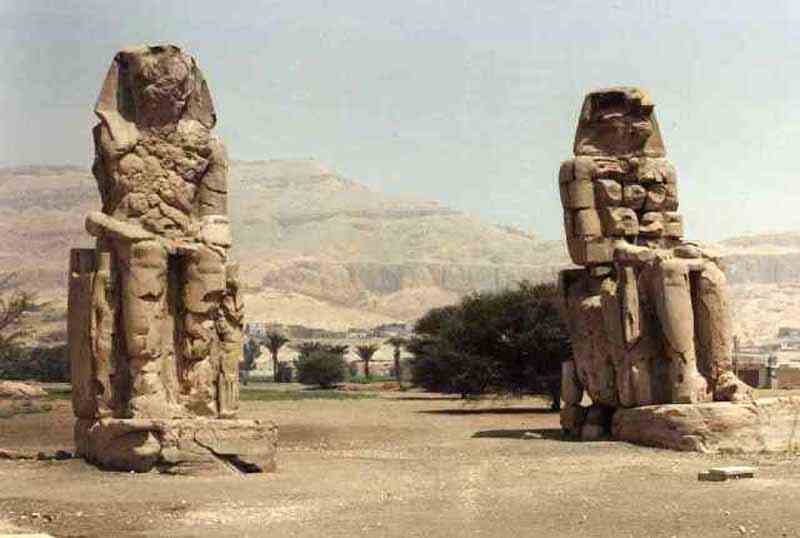
Luxor Temple
Luxor Temple was dedicated to Mut, the goddess of nature.
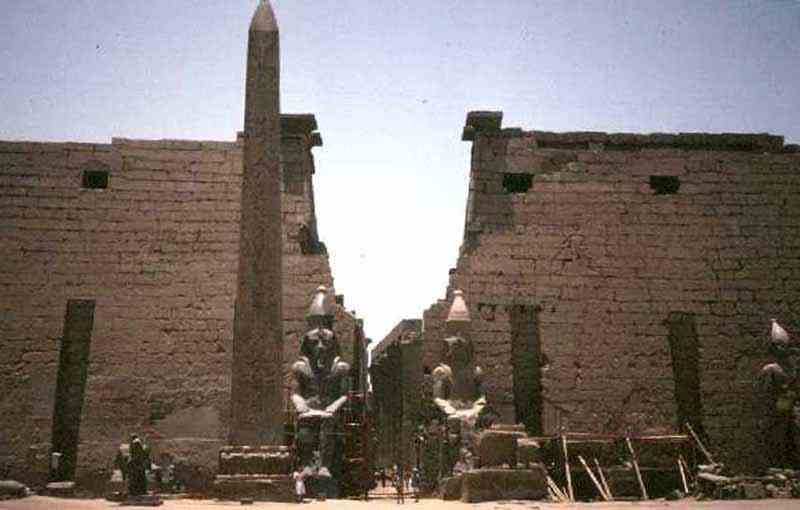
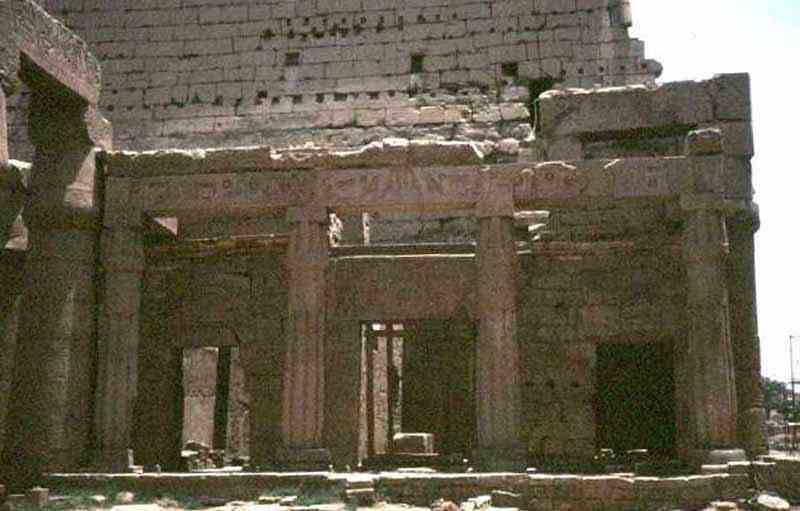
Each column was different - open lotus, closed lotus, bundled papyrus etc.
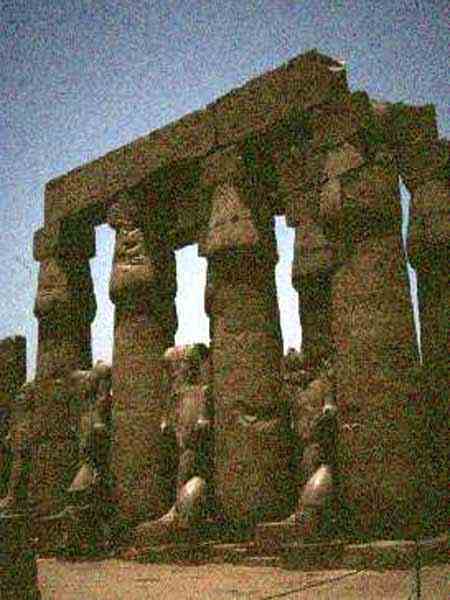

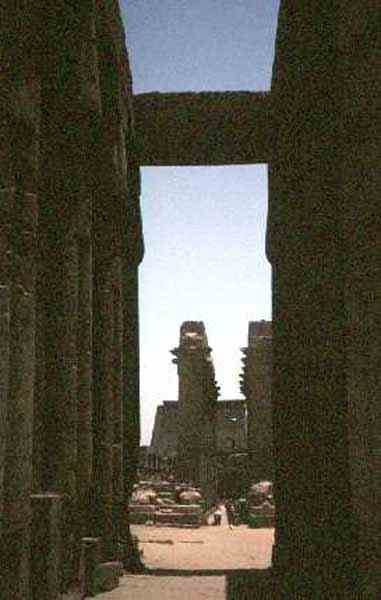

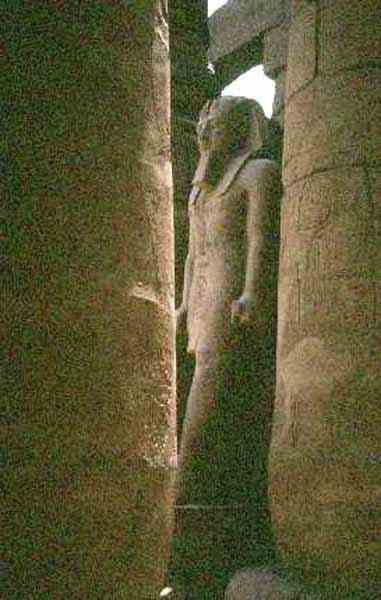
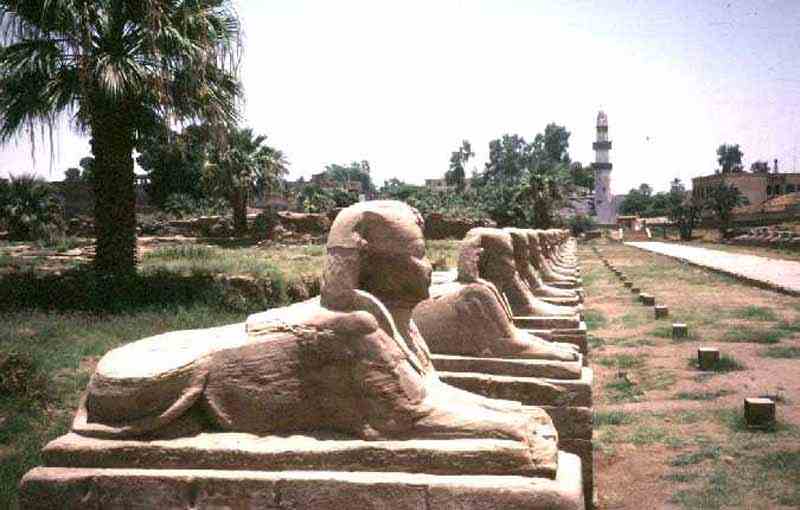
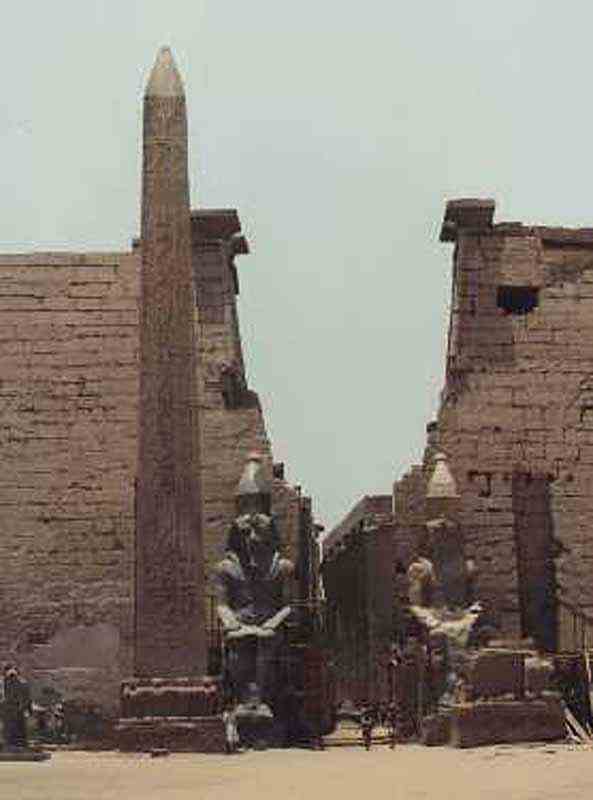
A mosque built on parts of the foundations of Luxor Temple.
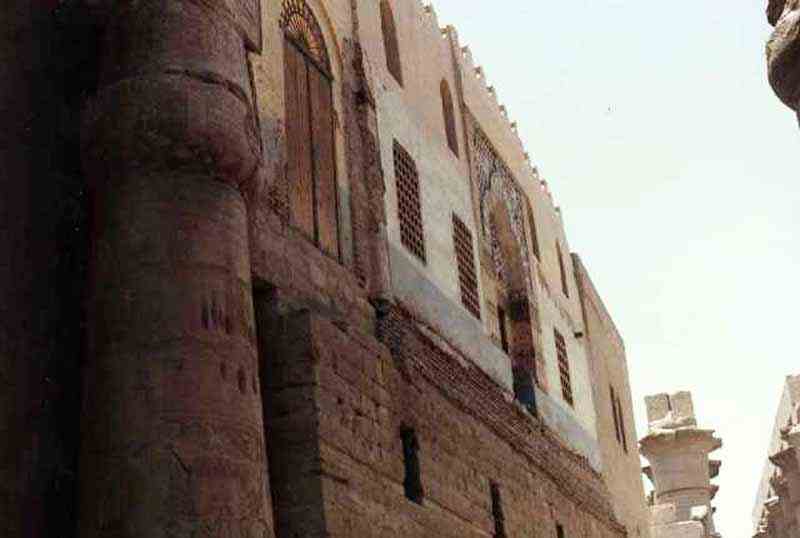
A double row of ram sphinxes that line the entrance to Luxor Temple.
Once this double row extended three and a half kilometres to the Karnak Temple.
It must have been an amazing sight.
The statues were sculptured in the form of sphinxes with lions bodies and rams heads, in order to protect the other statues of the King.
Whereas the lions represent the strongest creatures man has ever known, the rams are the epitome of fertility and reproduction.

Luxor

From Luxor we flew back to Cairo, staying overnight at The Heliopolis Sheraton Hotel
and then we flew on to Athens and back to London.
The end of my first trip to the Middle East.
After a week in London, I went on a 4-week tour of Western Europe.
Taking long service leave for the middle school term in 1985, I went on my first trip to Europe.
(A 13-week Melbourne - Bangkok - Hong Kong - Taipei - Japan - Trans Siberian Railway -
UK - Athens - Israel - Egypt - Western Europe - Singapore - Melbourne trip).
I flew to Cairo from Jerusalem in Israel.
A large statue of RamsesII at Memphis near Cairo.


The stepped pyramid of Djoser at Saqqara was built about 2620 BC.
It was the earliest stone structure of its size in the world.


My first glimpse of the famous Giza pyramids.

A camel ride for the last 250 metres to the Giza pyramids.


There are 9 pyramids on the Giza Plateau and they were built about 2600BC.
In case the king died early they were built in 3 stages - underground chamber, base and upper gallery.
They took 20 years to build.

Cheops (Khufu) is the largest pyramid.
It is perhaps the greatest single building ever erected by mankind.
Its 230m sides rise at an angle of 51.87degrees and are accurately oriented to the four cardinal points of the compass.
We were taken inside it to the burial chamber and tomb of Cheops.

Chephren (Khafre). The middle pyramid on the Giza plateau.

A view of Cairo from the pyramid of Cheops.



The most popular and current theory of the builder of the Sphinx holds that it was commissioned by the 4th Dynasty King, Chephren about 2500BC.
Chephren was one of the sons of Cheops who is recognized as the builder of the Great Pyramid. The Sphinx lines up with the Pyramid of Chephren.




The Nile River in Cairo.

A demonstration of making papyrus.
The stem of the reed is peeled, cut into strips, hammered, squeezed, soaked for a week, woven and pressed for a week.

After a visit to the Citadel of Salah El Din where we toured the Mosque of Mohamed Ali,
and a great visit to the fantastic Cairo Museum we flew down to Aswan.

Aswan
The cruise boat, Anni, our accommodation for 4 nights and in which we cruised from Aswan to Luxor.

Aswan was a delightful spot. It is situated just below the First Cataract of the Nile

The First Cataract of the Nile.

One of many feluccas on the Nile River at Aswan.

The Aga Khan mausoleum at Aswan.

An Australian tourist standing on The Unfinished Obelisk in a granite quarry at Aswan.
The workers discovered a flaw in the stone and abandoned it.
This obelisk would have been the biggest in Egypt had it been finished; 45m high and nearly 5 metres thick.




On top of The Aswan High Dam.
As well as controlling flooding of the Nile River water is used for irrigation and the production of hydro electricity.



The Temple of Isis on the island of Philae at Aswan.
Before its gradual submergence in the reservoir created by the old Aswan Dam in 1902 and 1907,
the alluvium-covered granite rock of Philae, had always been above the highest Nile floodings.
Accordingly, it attracted many ancient temple and shrine builders.
From early Egyptian times the island was sacred to the goddess Isis. The earliest structures known date from 689BC.
The present colonnade was built about 360BC.
The complex of structures of the Temple of Isis was completed by Ptolemy II and III from 285BC to 221BC.
Its decorations, dating from the period of the later Ptolemies and the Roman emperors
Augustus and Tiberius (27 BC to AD 37), were, however, never completed.

All these structures were thoroughly explored and reinforced (1895-96) before being partially flooded behind the old Aswan Dam.
In 1907 a careful inspection revealed that salts were damaging paints on the decorations.
When the temples re emerged after 1970 with the completion of the High Dam upstream,
it was found that considerable damage had been done to the shrines.

A decision was therefore made to remove them to higher ground on the nearby island of Agilkia.
Agilkia Island was leveled to resemble the original Philae, and the temples were rebuilt in 1980,
returning them to some measure of their original beauty.
The Roman emperor Hadrian (reigned AD 117-138) added this kiosk.
The Temple of Isis continued to flourish during Roman times and was not closed until the reign of Justinian I (AD 527-565).
Late in Justinian's reign the temple was converted into a church.
Many of the faces of the reliefs were defaced by the Coptics Christians who saw these reliefs as examples of a Pagan religion.
A pylon of the Temple of Philae.



Kom Ombo
We cruised down the Nile River from Aswan to Kom Ombo on our boat, Annie.
Part of the temple which stands on a promontory at a bend in the Nile river at the village of Kom Ombo about 50 km north of Aswan.

The temple was built from 237 to 87 BC. It features an inner sanctuary made of solid granite.



Kom Ombo means hill of sand.
It is the dual temple of Sorbek and Haroeris (the local crocodile god and the falcon-headed sky god)
and is the only temple dedicated to 2 gods.
Decorations on the ceiling of the temple at Kom Ombo.

All Egyptian figures have their pose with the left leg (heart side) closest to the viewer.
The temple was discovered in 1893 by a French expedition covered by this hill of sand and it took 23 years to remove the sand.




The stone blocks were held together with wooden wedges which have long since rotted away.

Our cruise boat, Annie, at Kom Ombo.

Edfu
One of the statues of Horus, the falcon-headed god at the Temple of Horus at Edfu.
Horus was the son of Osiris and Isis.
This temple which was covered by houses was discovered by the French in 1860. It took 40 years to uncover it.










Esna
The Temple of Khnum, the ram-headed creator god, at Esna.
The ancient Egyptians believed that Khnum moulded man on a potter's wheel.
It was uncovered in 1832 and is only partly complete - the rest may be underneath nearby houses.


A barrage and loch on the Nile River at Esna.




Luxor - Valley of the Kings
The entrance to Tutankhamun's tomb.
This tomb was covered with rubble from the building of other tombs and hence was not robbed like the others.
It was discovered by Carter in 1922. It contains the coffin that still contains the mummy
of the young king who died when he was 16 years, 4 months.

We also saw the tombs of Rameses VI, Rameses IX and Rameses III as well as the tomb of General Horennheb -
this was the tomb they were building for Tutankhamun but it was not ready when he died young.








The Valley of the Queens
The Temple of Queen Hatchepsut, the only ancient Egyptian building of 3 stories.
At the Temple of Queen Hatshepsut. The Queen is not buried here, as she considered herself a ruler and wore a false beard.
She is believed to be buried in the Valley of the Kings.





The Colossi of Memnon near Luxor. These 18m high statues are all that remain of a temple that was once on this site.
One of these statues was once damaged by a flood and a hole formed which whistled in the wind.
The locals thought it was the statue talking. The hole was later repaired.

Luxor Temple
Luxor Temple was dedicated to Mut, the goddess of nature.


Each column was different - open lotus, closed lotus, bundled papyrus etc.







A mosque built on parts of the foundations of Luxor Temple.

A double row of ram sphinxes that line the entrance to Luxor Temple.
Once this double row extended three and a half kilometres to the Karnak Temple.
It must have been an amazing sight.
The statues were sculptured in the form of sphinxes with lions bodies and rams heads, in order to protect the other statues of the King.
Whereas the lions represent the strongest creatures man has ever known, the rams are the epitome of fertility and reproduction.

Luxor

From Luxor we flew back to Cairo, staying overnight at The Heliopolis Sheraton Hotel
and then we flew on to Athens and back to London.
The end of my first trip to the Middle East.
After a week in London, I went on a 4-week tour of Western Europe.